THE MAGAZINE OF THE DULUTH SUPERIOR SYMPHONY ORCHESTRA

“


“

It’s normal to have questions about investing. With 30 years of real-world experience studying mutual funds and market patterns, Curt Teberg will work to get the answers you need to help make smart decisions. Curt is just a phone call away.
The Fund’s investment objectives, risks, charges and expenses must be considered carefully before investing. The prospectus contains this and other important information and may be obtained by calling 866-209-1964 or visiting tebergfund.com. Read it carefully before investing. Mutual fund investing involves risk; principal loss is possible. The Teberg Fund is distributed by Northern Lights Distributors, LLC, member FINRA/SIPC. 9141-NLD 04/01/2022 For information about the Fund, call Curt Teberg at 218-722-8248 or visit TebergFund.com. 5161 Miller Trunk Highway Duluth, MN 55811 TEBRX on the Nasdaq




WELCOME LETTER
8 Music Director Dirk Meyer
8 Board of Directors
9 Executive Director J. David Arnott
12 Staff and Administration
MEET THE ORCHESTRA
14-15 Meet the Orchestra
MASTERWORKS 4: BRAHMS THREE
20-25 Masterworks 4 Program Notes
MASTERWORKS 5: LA MER
28-32 Masterworks 5 Program Notes
MASTERWORKS 6: LA VALSE
36-46 Masterworks 6 Program Notes
POPS 2: STAR WARS
50 Pops 2 Program Notes
WAYS TO SUPPORT THE DSSO
52 How to Donate
52-58 DSSO Contributors



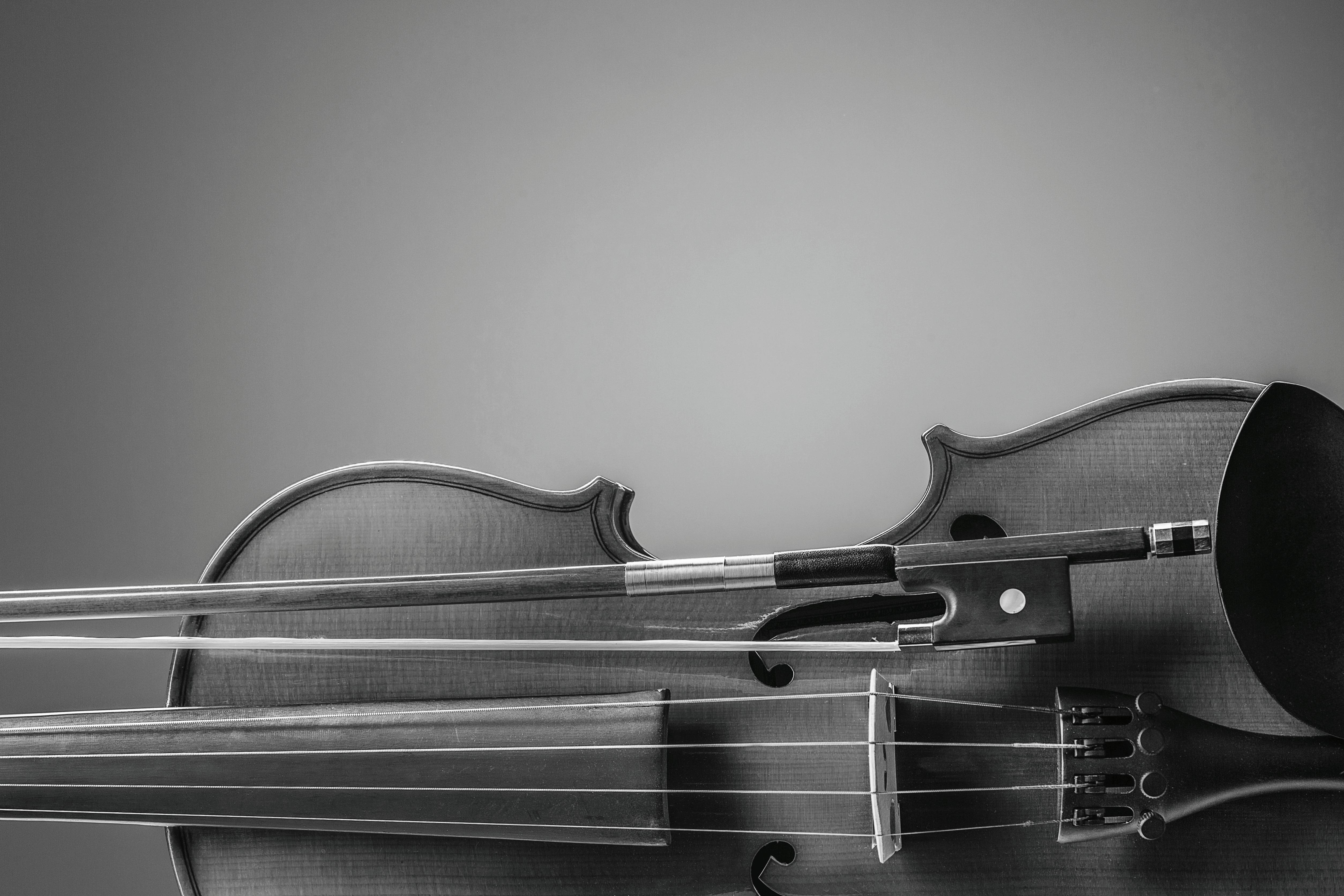



With the 2024/25 season the DSSO completes its three-year artistic initiative of bringing the voice of underrepresented composers to the stage of Symphony Hall. After featuring music by Black composers and female composers in the past two years, this season we turn our focus to American music, specifically contemporary American composers. With several regional premieres (and many more DSSO premieres), our season is packed with incredible music and unforgettable experiences.
Did you know that in 2024 we celebrate the 100th anniversary of Gershwin’s famous Rhapsody in Blue? We join in the celebration by bringing back acclaimed pianist Jeffrey Biegel, performing not just the Gershwin, but also the MN premiere of Peter Boyer’s new Rhapsody in Red, White and Blue, written specifically for this occasion. Another highlight awaits when the DSSO’s own principal second oboe, Darci Gamerl, performs the Midwest premiere of James Lee III’s new concerto for English Horn: Courageous Lights. Written especially for Darci, this work celebrates the work and life of three courageous women activists.
Amongst all those new works, of course we will not forget about the enduring classics and beloved favorites. Some of the highlights include works by Mozart and Mendelssohn, Sibelius’ mesmerizing Symphony No.3 alongside our celebration of Anton Bruckner’s 200th birthday (featuring his Te Deum), Chopin, Brahms, Ravel and Debussy’s unparalleled musical picture of the sea: La Mer. Finally, we feature music by two important American composers in our mini-festival with two Masterworks concerts at the DECC and a chamber music performance in between at the Depot, we will get to know the incredible works of Hollywood composer Erich Wolfgang Korngold and Baltimore-based composer Jonathan Leshnoff.
Our celebration of American music carries over into our pops where we bring back our annual Holiday concert tradition and wrap up the season with the one-and-only Star Wars: A New Hope, playing live on the big screen, with the DSSO performing the soundtrack live.
To paraphrase Obi-Wan Kenobi: May the DSSO be with you!
Mark Monson, Immediate Past President
Branden Robinson, President
Kay Biga, Treasurer
Mark Danielson, Secretary
BOARD OF DIRECTORS
J. David Arnott
John Berchild
Linda Boben
Rhonda Degelau
Beth Gilbert
Jeremy Hoglund
Olivia Huston
Tegan Johnson
Jill Kaiser
Steve Mattson
James McLeod
Dirk Meyer
Mark Monson
Emily Nygren
William Palmer
Kathleen Sanders
James Sebastian
Nairi Stack
Rajiv Vaidyanathan
Roberta Vose
Kat Werchouski
Tegan Johnson

HONORARY LIFE DIRECTORS
Christabel Grant
Elaine Killen
Dexter Larsen
Nancy Melander
James Zastrow

As I write this essay, it seems that I have been serving as Executive Director for just over 8 months. It’s been a steep learning curve and each day brings a new challenge. After playing in this orchestra since 2002, it’s absolutely amazing how much I didn’t know about this organization in terms of what it takes to make each and every concert a great experience for our audience and a worthy expenditure for our sponsors.
As the new calendar year begins, we still face challenges at the DSSO. Our financial position remains challenging, but we have found several new sources of support in terms of concert sponsors and musician chair sponsors. We have recently received several unexpected large gifts which have helped our situation immensely. Our goal is to end the 2024-2025 season with an empty Accounts Payable sheet. To meet this goal, we are developing a more realistic and achievable budget for the rest of this year as well as next year. Our intent is to continue providing music of the highest artistic quality.
The solutions to our challenges seem like simple economic realities. We continue to cut unnecessary spending on all
fronts. We are fine-tuning our advertising buys to target new constituencies and grow our audiences. We are good at reaching our current audience but it’s a new day—we must appeal to a new generation, to a wider audience, and thus sell more tickets.
We have reduced the full-time staff and are learning to accomplish what we need to with a team of highly-qualified part-time staff. Our part-time staff includes a grant writer, a graphic design and marketing person, a box office specialist, and a development person (who is also the librarian). I continue to serve as Director of Orchestra Operations in addition to Executive Director. I’m happy with the team I have assembled and look forward to working with all of them.
We are seeking ways to diversify our organization on all levels. You might notice our newly minted Land Acknowledgement statement which will debut this Spring. We have been inviting underserved communities to our concerts in the hope of retaining some of them as regular attendees. We are seeking a new generation of DSSO Board of Directors members.
We are collaborating with our peer organizations and pooling resources. Now that the DSSO, the MN Ballet, and LOON are all under one (really cool) roof, collaboration is a priority. Finding ways to work together and support each other is necessary, perhaps even crucial, for the survival of all three organizations. With a grant from The Depot Foundation, we are programming three chamber music concerts this Spring for our space in the St. Louis County Depot Auditorium. This new initiative will showcase three very different programs which we encourage all of you to attend (see The DSSO Presents page 13).
And finally, we are blessed to have a long-term relationship with a Music Director we all like and respect, and a stage full of highly qualified artists who make what we do possible.
If you are still reading this—wave to me. I’m up on stage playing my heart out. If you are able, we would love for you to sponsor a musician for a season. If you want to help another way— volunteer to house a musician for a concert week.


never too early to plan for the
Call North Shore Investments & Trust at 218-722-4211 to schedule a free consultation to discuss your future and your legacy.
• IRAs
• 401K Rollovers
• Trust & Estate Administration
• Investment Management
• Employee Benefit Plans
• And So Much More...








ADMINISTRATION
J. David Arnott, Executive Director
ARTISTIC STAFF
Dirk Meyer, The Charles A. & Carolyn M. Russell
Music Director
J. David Arnott, Director of Orchestra Operations
Kristin Sande, Librarian
Wyatt Millaway-Roodell, Production Coordinator
Kathleen Laasko, Stage Manager
CHORUS
Richard Carrick, Chorus Master generously sponsored by members of the DSSO Chorus & anonymous donors
Aine Miller, Chorus Administrator
Beth Sobczak, Rehearsal Accompanist
CONCERT BOX OFFICE
Jean Larson, Box Office Associate
Hannah Wohlers, Front of House Assistant
Cas Bordner, Front of House Assistant
Melanie Sever, Administrative Director and Concert Orchestra Conductor
Kristin Sande, Youth Orchestras Administrative Assistant
Ronald Kari, Youth Orchestras Coordinator
Byron Klimek, Youth Symphony Conductor
Kevin Hoeschen, Sinfonia Conductor
Teresa Aho, Sinfonia Conductor
Marc Harroo, Sinfonia Coach
Amy Eichers, Sinfonia Coach
Jeremy Craycraft, Percussion Ensemble Director
NORTHERN SOUNDS
Thanks to Andrea Halligan and Arrowhead
Printing for the preparation of this edition of Northern Sounds
NORTHERN SOUNDS PROGRAM NOTES
Vincent Osborn, Program Notes Writer
Ronald Kari, Performance Historian, now in his 63nd Season with DSSO
Kristin Sande, Research Assistant
DULUTH SUPERIOR SYMPHONY ORCHESTRA
506 W. Michigan St., Ste. 7, Duluth, MN 55802
TICKETS
218–623–3776 patronservices@dsso.com | www.dsso.com
Dirk Meyer (2013 – present)
Markand Thakar (2001 – 2012)
Yong-yan Hu (1995 – 2000)
Taavo Virkhaus (1977-1994)
Joseph Hawthorne (1967-1977)
Hermann Herz (1950-1967)
Joseph Wagner (1947-1950)
Tauno Hannikainen (1942 – 1947)
Paul Lemay (1932 – 1942)
MARK YOUR CALENDARS FOR THESE UNFORGETTABLE EVENINGS OF LIVE CHAMBER MUSIC PERFORMED BY TALENTED MEMBERS OF THE DSSO.




February 12, 7:30PM
The Depot Theatre
The DSSO will present an evening of chamber music by Erich Wolfgang Korngold and Jonathan Leshnoff, featuring members of the Duluth Superior Symphony and baritone Andy Wilkowske. Music includes Korngold’s Piano Quintet, Leshnoff’s trio for Violin, Horn, and Piano, and art songs by both composers. General admission tickets are $10 and are available for purchase online at www.dsso.com
This program is made possible through a grant from The Depot Foundation.
March 15, 7:30PM
The Depot Theatre
The DSSO will present an extraordinary evening of chamber music and poetry by Sir William Walton and Dame Edith Sitwell. Members of the Duluth Superior Symphony will be joined by local legends, Vicky Fingalson and Calland Metts, in a performance of Façade; an Entertainment. This rarely-performed work features a chamber ensemble of diverse instruments and the recitation of poetry in rhythm—a sort of pre-rap if you will. A review of the premiere in 1923 stated: “The audience was at first inclined to treat the whole thing as an absurd joke, but there is always a surprisingly serious element in Miss Sitwell’s poetry and Mr. Walton’s music ... which soon induced the audience to listen with breathless attention.” Join us in breathless attention!
General admission tickets are $10 and are available for purchase online at www.dsso.com
This program is made possible through a grant from The Depot Foundation.
June 22, 3:00PM
The Depot Theatre
The DSSO will present an afternoon of chamber music by the Highland String Quartet featuring music by Sergei Prokofiev, Sheridan Seyfried, and Robert Schumann. Clarinetist Ted Schoen and pianist Alex Sandor will join them.
General admission tickets are $10 and are available for purchase online at www.dsso.com
This program is made possible through a grant from The Depot Foundation.
DIRK MEYER, THE CHARLES A. & CAROLYN M. RUSSELL MUSIC DIRECTOR
Erin Aldridge, Concertmaster
Sponsor: Arend & Verna Sandbulte in support of the concertmaster chair through the Sandbulte Orchestra Leadership Fund
Angela Waterman-Hanson, Associate Concertmaster
Lian Ojakangas, Interim Assistant Concertmaster
Sponsored by Rose & Lester Drewes
Nicole Craycraft
Kathleen Sanders
Sponsored by Dr. Vicki & Terry Anderson
Nairi Stack
Sponsored by Stack Brothers Mechanical Contractors & William Stack
Joan Halquist
Amanda Wirta
Sponsored by Rhonda & John Degelau
Daniel Radosevich
Steve Highland
Sponsored by Thomas & Barbara Elliott
Jenna Mattson
Sponsored by Tom & Jill Kaiser
Kristin Sande
Sponsored by Karen Hanson Sande, Joshua & Nathan Sande
Laurie Bastian, Principal
Sponsored by James & Jacquie Sebastian
Jean Leibfried, Assistant Principal
Sponsored by Sandra Barkley
Amy Eichers
Sponsored by Thomas & Alice McCabe
Olga Chernyshev
Sponsored by Walter & Kay Gower
Marc Harroo
Michael Zellgert
Sponsored by Vern & May Nordling
Sarah Warner
Sponsored by Kathleen & James Sanders
Kristen Anderson
Sponsored by Diane Kolquist & James Seitz
Lara Hicks
Kevin Hoeschen, Principal
Sponsored by Kay Biga & Patrick Spott; Irina Haller
Ronald Kari, Assistant Principal
Sponsored by Stephen & Lauri Cushing; Ruth Ann Eaton
Clare Chopp
Sponsored by Martha Aas
Jonathan Kresha
Sponsored by Nancy Odden & Doug W. Britton
Kevin Peterson
Sponsored by Robert T. & Barbara K. Bennett; Linda & Mark Boben
Elizabeth Cregan
J. David Arnott
Sponsored by Sylvia Jamar
Judy MacGibbon
Kelli Barker
Sponsored by Brad Schmugge
John Middleton
Sponsored by LaVonne Middleton
Betsy Husby, Principal
Sponsored by Christabel Grant
Lucia Magney, Assistant Principal
Julia Morehouse
Sponsored by Nancy Melander; Nancy & Mark Melhus
Eric Graf
Rebecca M. Peterson
Sponsored by Robert T. & Barbara K. Bennett
Darin Anderson
Byron Klimek
Lindsay Schlemmer
Scott Lykins (On Leave 24-25)
Daniel Keeler
Cassidy Morgan, Principal
Vincent Osborn, Assistant Principal
Sponsored by Lane Fryberger Smith
Anthony Lischalk
James McLeod
Sponsored by Branden Robinson
Irving G. Steinberg
Sponsored by Lurene Buhrmann
Blake Bonde
Sponsored by Carolyn Sundquist
Gordon Lewis
James DeVoll, Principal
Melanie Sever, Flute 2
Sponsored by Geiger & David Yount
Michael Dayton, Principal
Sponsored by Gary & Jacqueline Foley
Darci Griffith Gamerl, Oboe 2
Sarah Boyle Carmack, Oboe 3/English Horn
Jennifer Gerth, Principal (On Leave 24-25)
Sponsored by William “Buzz” & Saundra Palmer
Theodore Schoen, Acting Principal 24-25
Sponsored by Karl Diekman
Kristine Peterson, Clarinet 2
Michael Roemhildt, Principal
Sponsored by Gudrun & Geoffrey Witrak
Jefferson Campbell, Bassoon 2
Sponsored by Timothy Sandor in memory of Adeline & Joseph Sandor
Karl Kubiak, Bassoon 3/Contrabassoon
Gregory Kehl Moore, Principal
James Pospisil, Principal
Sponsored by James & Mary Zastrow
Erika Hammerschmidt, Horn 2
Sponsored by Roger & Elaine Engle; Robert & Mary Evans
Gwendolyn Hoberg, Horn 3
Nicholas Brown, Horn 4
Deborah Rausch, Assistant / Utility
Sponsored by Janice Biga
Earl Salemink, Principal Sponsored by Robert Wahman
Charles Leibfried, Trumpet 2
Sponsored by Jeff & Vickie Cadwell; Patricia & David Mast
Thomas Pfotenhauer, Trumpet 3
Sponsored by Mark & Grace Monson
Larry Zimmerman, Principal
Sponsored by Gale & Jeri Kerns; Roberta Vose
Christian Howard, Trombone 2
James Erickson, Bass Trombone
Sponsored by Mark Danielson & Theresa Smith
Steve Grove, Principal
Sponsored by Helena Jackson & Doug Dunham
TIMPANI
Fred Morgan, Principal
Colin O’ Day, Principal
Sponsored by Dr. Susan Relf
Janell Kokkonen Lemire, Principal
Sponsored by Elaine B. Killen
Alexander Sandor, Principal
Sponsored by Mary Hunner Robinson

For more than 80 years, thousands of young musicians throughout the Northland have found inspiration in the Duluth Superior Symphony Youth Orchestras program (DSSYO).
The DSSYO allows these young musicians to sharpen their music skills through a variety of experiences with DSSO conductors and musicians in rehearsals, sectionals, and sideby-side performances.
DSSYO GENEROUSLY SPONSORED BY

IN REMEMBRANCE OF JACOB NEPHEW
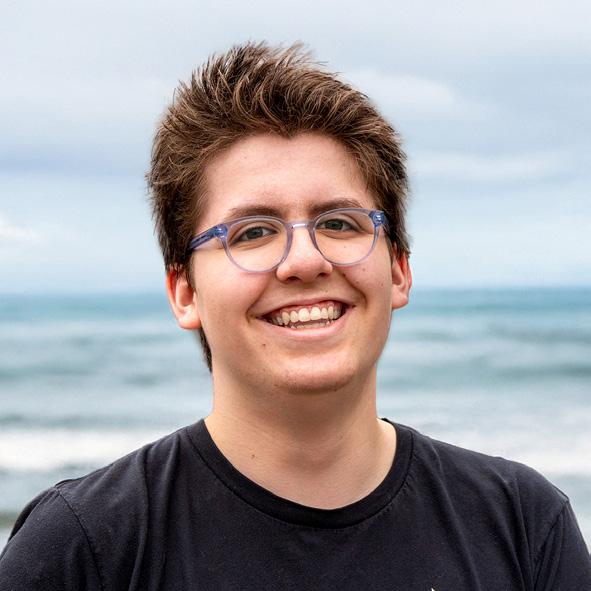
The DSSYO family is deeply grieved and shocked by the loss of violinist Jacob Nephew and his mother Erin Abramson in a tragic shooting in November 2024.
Jacob had participated in the DSSYO program since 2019 when he was a 5th grader. He was a member of the Sinfonia, Concert Orchestra and, for the last two years, the Youth Symphony. Jacob was an enthusiastic young musician, beloved by fellow students and staff alike. He had the most genuine and engaging smile and was always interested in sharing his many interests and experiences. He had a very close and loving relationship with his mom and often expressed his pride in her athletic accomplishments. The absence of his special light is profoundly felt.
In Memory of Jacob Nephew, a DSSO Youth Symphony Peer By Yupeng Chen
His bow took flight, His passion filled our space; Every Monday night, I saw joy on his face.
In summer quartet, His spirit soared; Whenever we met, His music poured.
What dreams he chased, What music he longed to play; Melody ended in a haste, Gifted peer, a world away.
Full of questions, but answers hide, A lost melody, yet echoes stay; Kind soul will never subside, We play forever along the way.
If desired, donations may be made to the DSSYO in memory of Jacob.
Better begins at Aspirus St. Luke’s. All good things start by reaching out to each other with real care and compassion. At Aspirus St. Luke’s, this is how health and healing begin.






pierbresort.com

Marshall School is an accredited independent college preparatory school for students in grades K-12.
For more than a century, Marshall has adapted with Duluth while maintaining a foundation of providing the highest quality educational experience and consistently upholding values of exhibiting strong academic habits, integrity, respect, and compassion.
Students benefit from unique programs and characteristics, including:
• Innovative outdoor-based K-4 Forest School
• International boarding program with over 35 learners from countries around the world
• Small class sizes and individualized attention from educators
• A safe, secure, welcoming community and campus
• Outstanding graduation rates and substantial earned college scholarship amounts
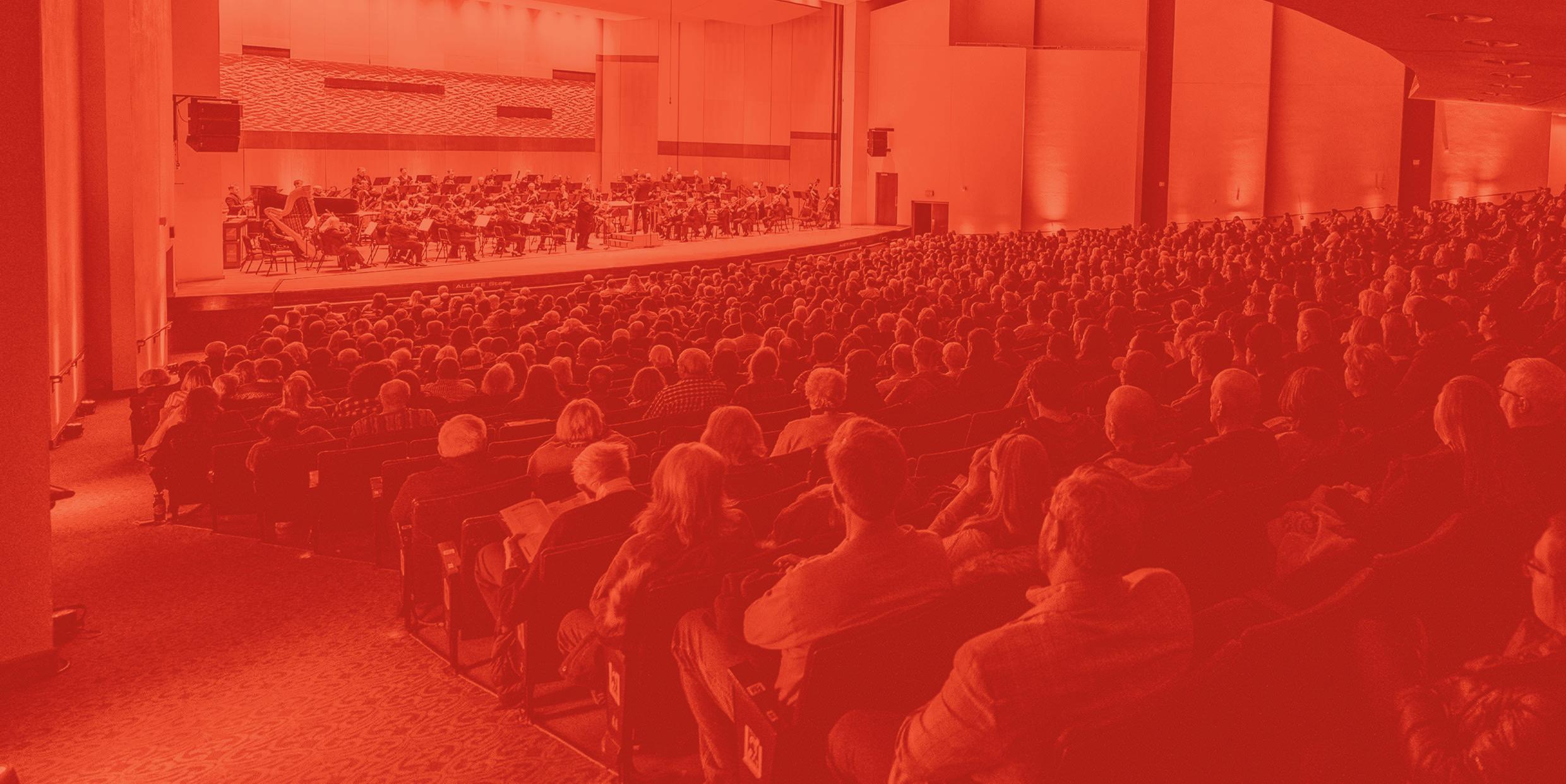
CONCERT SPONSOR
SATURDAY, FEBRUARY 1, 2025, 7 PM
DECC SYMPHONY HALL, ALLETE STAGE
DIRK MEYER, CONDUCTOR
JULIE ALBERS, CELLO
Cello Concerto in C major, Op. 37
Julie
Symphony No. 3 in F major, Op. 90
Allegro con brio
Andante
Poco allegretto
Allegro – Un poco sostenuto
Theme and Variations, Op. 42 and Cello Concerto in C Major, Op. 37 by Erich Wolfgang Korngold are presented under license from European American Music Distributors Company and Schott Music.
Mariel for cello and orchestra by Osvaldo Golijov is presented under license from Boosey & Hawkes, Inc.

American cellist Julie Albers is recognized for her superlative artistry, her charismatic and radiant performing style, and her intense musicianship. She was born into a musical family in Longmont, Colorado and began violin studies at the age of two with her mother, switching to cello at four. She moved to Cleveland during her junior year of high school to pursue studies through the Young Artist Program at the Cleveland Institute of Music, where she studied with Richard Aaron. Miss Albers soon was awarded the Grand Prize at the XIII International Competition for Young Musicians in Douai, France, and as a result toured France as soloist with Orchestre Symphonique de Douai.
Julie Albers made her major orchestral debut with the Cleveland Orchestra in 1998, and thereafter has performed in recital and with orchestras throughout North America, Europe, Korea, Taiwan, Australia, and New Zealand. In 2001, she won Second Prize in Munich’s Internationalen Musikwettbewerbes der ARD, and was also awarded the Wilhelm-Weichsler-Musikpreis der Stadt Osnabruch. While in Germany, she recorded solo and chamber music of Kodaly for the Bavarian Radio, performances that have been heard throughout Europe. In 2003, Miss Albers was named the
first Gold Medal Laureate of South Korea’s Gyeongnam International Music Competition, winning the $25,000 Grand Prize.
In North America, Miss Albers has performed with many important orchestras and ensembles. Recent performances have included exciting debuts on the San Francisco Performances series and with the Grant Park Music Festival where she performed Penderecki’s Concerto Grosso for 3 cellos with Mr. Penderecki conducting. Past seasons have included concerto appearances with the orchestras of Colorado, Indianapolis, San Diego, Seattle, Vancouver; St. Paul Chamber Orchestra, and Munchener Kammerorchester among others. During the 2014 -15 season, performances included appearances with the Winnipeg Symphony, Oklahoma Philharmonic, San Antonio Symphony, St. Paul Chamber Orchestra, and Albany Symphony where she premiered a new concerto by Michael Torke. Upcoming performances include recitals with pianist Orion Weiss at the Schubert Club in St. Paul, MN and the Orange County Philharmonic Society in Costa Mesa, CA along with appearances with orchestras such as the Colorado Music Festival orchestra, the Ann Arbor Symphony, the Rochester and Rhode Island Philharmonics, amongst others.
In addition to solo performances, Miss Albers regularly participates in chamber music festivals around the world. 2009 marked the end of a three year residency with the Chamber Music Society of Lincoln Center Two. She is currently active with the Albers String Trio and the Cortona Trio. Teaching is also a very important part of Miss Albers’ musical life. She currently is Assistant Professor and holds the Mary Jean and Charles Yates Cello Chair at the McDuffie Center for Strings at Mercer University in Macon, Georgia. Miss Albers was named principal cellist of the St. Paul Chamber Orchestra in 2014 and began her position there in Fall 2015.
Miss Albers’ debut album with Orion Weiss includes works by Rachmaninoff, Beethoven, Schumann, Massenet, and Piatiagorsky and is available on the Artek Label. Julie Albers performs on a N.F. Vuillaume cello made in 1872 and makes her home in Minneapolis with her husband, Bourbon, and their dog, Dozer.

ERICH WOLFGANG KORNGOLD
BORN: May 29, 1897, in Brno, Moravia (now Czech Republic)
DIED: November 29, 1957, in Hollywood, California
WORK COMPOSED: 1953
WORLD PREMIERE: Undocumented
PERFORMANCE HISTORY: Tonight’s performance is the first by the DSSO.
INSTRUMENTATION: Two flutes, oboe (optional), two clarinets, bassoon (optional), two horns (optional), two trumpets, two trombones, timpani, percussion (cymbals, snare drum, glockenspiel), harp (optional), piano and strings.
DURATION : 7 minutes
Korngold’s Theme and Variations is the result of a commission he received in 1953 from the American School Orchestras Association. Originally written for string orchestra and harp, the piece showcases his melodic inventiveness, harmonic sophistication, and flair for orchestration.
The original charming and lilting theme is marked to be played “like an Irish folk tune.” Korngold’s genius lies in the way he imbues each phrase with emotional depth, weaving intricate counterpoints that elevate the theme’s inherent simplicity. It is a melody that feels timeless yet personal, echoing the heart-on-sleeve expressiveness of his earlier works while maintaining a disciplined classical elegance.
As the variations unfold, Korngold demonstrates his versatility and mastery of form. Each variation transforms the theme through changes in tempo, texture, and mood, showcasing his profound understanding of orchestration. Playful scherzos, wistful adagios, and dramatic climaxes alternate, creating a rich tapestry of sound that engages the listener. The harp plays a pivotal role in adding shimmering colors and delicate flourishes, enhancing the piece’s ethereal quality.
The final variation, a triumphal march, demonstrates a remarkable transformation of the theme heard at the beginning of the work. Movie buffs may find a similarity between this variation and the famous March of the Merry Men from Korngold’s Oscar-winning score to the 1938 film The Adventures of Robin Hood. Korngold’s Theme and Variations remains a captivating work that highlights his dual legacy as a composer of both classical and film music.

Mariel OSVALDO NOÉ GOLIJOV
BORN: December 5, 1960, in La Plata, Argentina
WORK COMPOSED: 1999
WORLD PREMIERE: 1999 at Merkin Hall, NY; Maya Beiser, cello and Steve Schick, marimba
PERFORMANCE HISTORY: Tonight’s performance is the first by the DSSO.
INSTRUMENTATION: Three flutes (3rd doubles alto flute), oboe and English horn, two clarinets (2nd doubles bass clarinet), two bassoons, four horns, two trumpets, three trombones, tuba, timpani, percussion (marimba, vibraphone, chimes, crotales, triangles, tam-tams), harp, celesta, strings and solo cello.
DURATION : 13 minutes
Golijov’s parents were Romanian Jewish immigrants to Argentina. Beyond being exposed to the traditional music (Jewish liturgical and traditional klezmer) of his parents’ culture and faith, growing up in Argentina exposed him to that country’s many styles, including the tango. Traveling abroad to Jerusalem in 1983 and then to Pennsylvania in 1986 to finish his PhD in composition, he absorbed the various musical styles he encountered in his studies. These influences of other people and their music had a great impact on the development of Golijov’s musical personality.
The musical language of Golijov is living and vibrant. The result of this is that he often revises his works, sometimes over many years, to come to a final version – that is if there is a final version. The original version of Mariel was composed originally for cellist Maya Beiser and marimbist Steve Schick only to be reworked into a full orchestra version so it would reach a larger audience. The inspiration for Mariel comes from a moment of personal tragedy for the composer. Mariel Stubrin, the wife of one of his closest friends, was killed in an automobile accident in southern Chile.
Golijov furnishes an introduction to this work: “I wrote Mariel in memory of a friend who died in a car accident in Patagonia, where the trees are very, very tall. The inspiration there was, of course, to write an elegy for her, but I imagined the moment when grief still hadn’t arrived, the moment of being stunned by what happened, and I imagined the light of the sunshine filtering through the very tall trees. So for the marimba I imagined the refraction of the light, and the cello is like the spirit of that friend elevating. It’s almost like a painting, the idea of creating that melody and that effect of light in such a way that it’s almost like one single moment of light reverberating, rather than time progressing – suspended and vibrating, rather than going from the past to the future.”

ERICH WOLFGANG KORNGOLD
BORN: May 29, 1897, in Brno, Moravia (now Czech Republic)
DIED: November 29, 1957, in Hollywood, California
WORK COMPOSED: 1946
WORLD PREMIERE: December 29, 1946, in Los Angeles; Eleanor Aller Slatkin with the Los Angeles Philharmonic.
PERFORMANCE HISTORY: Tonight’s performance is the first by the DSSO.
INSTRUMENTATION: Two flutes (2nd doubles piccolo), two oboes (2nd doubles English horn), two clarinets and bass clarinet, two bassoons (2nd doubles contrabassoon), two horns, two trumpets, two trombones, tuba, timpani, percussion (bass drum, tam-tam, cymbals, suspended cymbal, xylophone, glockenspiel, vibraphone, marimba), harp, piano, celesta, strings and solo cello.
DURATION : 13 minutes
Korngold’s Cello Concerto is an ideal example of his music making the transition from the silver screen to the concert stage. In 1946 Korngold began work on what would be his last original film score, Deception, a movie set in New York, in the world of classical music. The movie starred Claude Rains as the egomaniacal composer Alexander Hollenius, Bette Davis as his pupil and mistress Christine Radcliffe, and Paul Henried as the cellist Karel Novák, her former lover just released from a concentration camp. Part of the musical score was a short
concert work for the film’s climax and the result was the Cello Concerto in C major. The original version was only six minutes long, but it was so successful that Korngold expanded it to its current form and had it published in 1950. Although it is a showpiece for the cello, at only thirteen minutes its brevity might explain why it isn’t performed often.
The very heart of Deception is Korngold’s music. Hollenius writes a cello concerto and has it premiered with the sole aim of taking revenge on his mistress who has just left him for Novák. The concerto itself is a character in the driving force of the plot. Throughout the film Christine’s expressions follow the movements of the music, whether preexisting works (Schubert, Haydn, Beethoven) or Korngold’s score.
When Christine and Karel are first reunited he knows nothing of her relationship with Hollenius. They marry, but Hollenius makes a dramatic entrance at their wedding reception. His jealousy is clearly evident to the point he squeezes a wine glass until it shatters. Hollenius presents Karel with a manuscript of his new cello concerto, which Karel agrees to perform at its premiere thinking this would be a great introduction to America for him. Christine realizes that another cellist in the orchestra is being tutored on the solo by Hollenius and she suspects that Hollenius will try to sabotage Karel’s career.
Hollenius breaks off a dress rehearsal blaming Karel’s temperamental behavior, but the friction between the two had been building from the beginning. Hollenius makes it clear that Karel will play the concerto and on the evening of the premiere, Christine visits Hollenius, who tells her that he will allow Karel the joy of a successful performance only to then destroy him by telling him about their love affair. Christine is distraught and shoots Hollenius, killing him. Another conductor takes the place of the absent Hollenius and the performance is a great success. While the wellwishers wait, Christine confesses everything to Karel and they leave the concert hall together. A lady comments to Christine as they are walking out, “you must be the happiest woman in the world,” which elicits a guarded smile from Christine.
The suspense and frenetic energy of the film is perfectly depicted in Korngold’s Cello Concerto. Eleanore Aller (19171995) is the cellist performing the concerto on the movie soundtrack and also performed its premiere with the Los Angeles Philharmonic in 1946. Aller became the principal cellist in the Warner Brothers Studio Orchestra in 1939; her father also played in the orchestra and her pianist brother Victor Aller later became the orchestra manager. She was the first woman to hold a principal chair in a Hollywood studio orchestra. That same year she met and married Felix Slatkin (1915-1963) and shortly after their marriage they founded the Hollywood String Quartet. After her husband died, in addition to her studio work, she played in orchestras for recordings with Frank Sinatra. The cello solo in the 1977 film Close Encounters of the Third Kind was specially written for her by John Williams. Her two sons are the conductor Leonard Slatkin and the cellist Frederick Zlotkin.

JOHANNES BRAHMS
BORN: May 7, 1833, in Hamburg, Germany
DIED: April 3, 1897, in Vienna, Austria
WORK COMPOSED: 1883
WORLD PREMIERE: December 2, 1883, in Vienna; Vienna Philharmonic, Hans Richter conducting.
PERFORMANCE HISTORY: The DSSO has played this work seven times previously in: 1938, 1951, 1959, 1968, 1981, 1992, and on March 26, 2011.
INSTRUMENTATION: Two flutes, two oboes, two clarinets, two bassoons and contrabassoon, four horns, two trumpets, three trombones, timpani and strings.
DURATION : 33 minutes
Brahms wrote his Third Symphony at the age of 50, during a period of profound self-assurance. By this time he had firmly established himself as a leading figure in the Romantic era. The composition came six years after his Second Symphony, a time during which Brahms had achieved widespread acclaim and was enjoying a fruitful phase of creativity. He completed the symphony during the summer of 1883 while vacationing in Wiesbaden, a location that seemed to inspire him with its serene landscapes and proximity to nature.
After composing his Symphony No. 2 Brahms wrote some of his greatest works, including the Violin Concerto, Tragic Overture, Academic Festival Overture and Piano Concerto
No. 2. Only seventeen years after completing his First Symphony, which took him over twenty years and a lot of soul-searching, he composed Symphony No. 3, one of the finest achievements in the symphonic repertoire.
Brahms developed a personal motto F-A-F, frei aber froh (free but happy), after befriending the Hungarian violinist Joseph Joachim (1831-1907), who had already adopted his own personal motto F-A-E, frei aber einsam (free but lonely). Some argue that Brahms would not use this motto as a personal musical statement, but he often reminded his friends that “I speak through my music.” Nevertheless the opening of the Third Symphony uses the motto of F-A-F and then again substitutes the A with an A-flat. This motto persists, either boldly or disguised, throughout the first movement.
The premiere in Vienna was a huge success. Eduard Hanslick (1825-1904), a close friend of Brahms and among the leading critics of his time, pronounced the Third Symphony “a feast for the music lover and musician. Many music lovers will prefer the titanic force of the First Symphony, others, the untroubled charm of the Second, but the Third strikes me as being artistically the most nearly perfect. It is more compactly made, more transparent in detail, more plastic in the main themes.” Brahms’ Third Symphony is the shortest of his four symphonies. Hans Richter (1843-1916), who conducted the premiere, proclaimed it to be Brahms’ Eroica, in reference to Beethoven’s Third Symphony.
Brahms’ combination of opposing themes is one of the most striking aspects of the Third Symphony: the heroic and the lyrical, the personal and the universal, the disciplined and the emotional. He achieves this balance through meticulous attention to structure, counterpoint and orchestration. Where themes recur in multiple movements, he creates a sense of unity. The work itself bridges the gap between the Classical and Romantic eras. Its exploration of themes like freedom, happiness, and introspection resonates deeply, offering listeners an enduring journey through the depths of human emotion. As one of the crowning achievements of Brahms’ career, the Third Symphony continues to captivate audiences with its beauty, complexity, and profound humanity.
Program notes by Vincent Osborn © 2024
Gifting to a cause close to your heart is a wonderful way to make an impact throughout your lifetime.
Learn more about the financial benefits of thoughtful planned giving by scanning the QR code to hear about ways to give.






SATURDAY, MARCH 1, 2025, 7 PM
DECC SYMPHONY HALL, ALLETE STAGE
DIRK MEYER, CONDUCTOR
NATASHA PAREMSKI, PIANO
Piano Concerto No. 1 in E minor, Op. 11
Natasha Paremski, Piano
Allegro maestoso
Romanze – Larghetto
Rondo – Vivace
No. 4, Heichalos (2017)
“From dawn to noon on the sea” – très lent – animez peu à peu
“Play of the waves” – allegro (dans un rythme très souple) – animé
“Dialogue of the wind and the sea” – animé et tumultueux – cédez très légèrement
CONCERT SPONSOR
DULUTH GRILL FAMILY OF RESTAURANTS





Symphony No. 4 by Jonathan Leshnoff is presented under license from Theodore Presser Company.

With her consistently striking and dynamic performances, pianist Natasha Paremski reveals astounding virtuosity and profound interpretations. She continues to generate excitement from all corners as she wins over audiences with her musical sensibility and a powerful, flawless technique.
Natasha is a regular return guest of many major orchestras, including Minnesota Orchestra, San Francisco Symphony, Grant Park Festival, Winnipeg Symphony, Kitchener-Waterloo Symphony, Oregon Symphony, Elgin Symphony, Colorado Symphony, Buffalo Philharmonic, Virginia Symphony, and Royal Philharmonic Orchestra with whom she has performed and toured frequently since 2008 in venues such as Royal Albert Hall, Royal Festival Hall, and Cadogan Hall. She has performed with major orchestras in North America including Dallas Symphony Orchestra, Los Angeles Philharmonic Orchestra, San Diego Symphony, Toronto Symphony, Baltimore Symphony, Houston Symphony, NAC Orchestra in Ottawa, Nashville Symphony. She has toured extensively in Europe with such orchestras as Bournemouth Symphony Orchestra, Vienna’s Tonkünstler Orchester, Royal Scottish National Orchestra, Orchestre de Bretagne, the Orchestre de Nancy, Royal Liverpool Philharmonic Orchestra, Tonhalle Orchester in Zurich, Moscow Philharmonic, under the direction of conductors including Thomas Dausgaard, Peter Oundjian, Andres Orozco-Estrada, Jeffrey Kahane, James Gaffigan, JoAnn Falletta, Fabien Gabel, Rossen Milanov and Andrew Litton. In addition, she has toured with Gidon Kremer and the Kremerata Baltica in Latvia, Benelux, the United Kingdom and Austria as well as appearances with National Taiwan Symphony Orchestra in Taipei.
Natasha has given recitals at the Auditorium du Louvre in Paris, Wigmore Hall, Schloss Elmau, Mecklenburg-Vorpommern Festival, Verbier Festival, San Francisco Performances, Seattle’s Meany Hall, Kansas City’s Harriman Jewell Series, Santa Fe’s Lensic Theater, Ludwigshafen BASF Series, Teatro Colon in
Buenos Aires, Tokyo’s Musashino Performing Arts Center and on the Rising Stars Series of Gilmore and Ravinia Festivals.
A passionate chamber musician, Natasha is a regular recital partner of Grammy winning cellist Zuill Bailey, with whom she has recorded a number of CDs. Their Britten album on Telarc debuted at No. 1 on the Billboard Classical Chart, remaining there for a number of weeks, in addition to being featured on The New York Times Playlist. She has been a guest of many chamber music festivals such as Jeffrey Kahane’s Green Music Center ChamberFest, the Lockenhaus, Toronto, Sitka Summer Music, and Cape Cod Chamber Music festivals to name a few.
Natasha was awarded several prestigious prizes at a very young age, including the Gilmore Young Artists prize in 2006 at the age of eighteen, the Prix Montblanc in 2007, the Orpheum Stiftung Prize in Switzerland. In September 2010, she was awarded the Classical Recording Foundation’s Young Artist of the Year. Her first recital album was released in 2011 to great acclaim, topping the Billboard Classical Charts, and was re-released on the Steinway & Sons label in September 2016 featuring Islamey recorded on Steinway’s revolutionary new Spirio technology. In 2012 she recorded Tchaikovsky’s Piano Concerto No. 1 and Rachmaninoff’s Paganini Rhapsody with Royal Philharmonic Orchestra and Fabien Gabel on the orchestra’s label distributed by Naxos.
With a strong focus on new music, Natasha’s growing repertoire reflects an artistic maturity beyond her years. In the 2010-11 season, she played the world premiere of a sonata written for her by Gabriel Kahane, which was also included in her solo album.
Natasha continues to extend her performance activity and range beyond the traditional concert hall. In December 2008, she was the featured pianist in choreographer Benjamin Millepied’s Danses Concertantes at New York’s Joyce Theater. She was featured in a major two-part film for BBC Television on the life and work of Tchaikovsky, shot on location in St. Petersburg, performing excerpts from Tchaikovsky’s First Piano Concerto and other works. In the winter of 2007, Natasha participated along with Simon Keenlyside in the filming of Twin Spirits, a project starring Sting and Trudie Styler that explores the music and writing of Robert and Clara Schumann, which was released on DVD. She has performed in the project live several times with the co-creators in New York and the U.K., directed by John Caird, the original director/adaptor of the musical Les Misérables
Natasha began her piano studies at the age of four with Nina Malikova at Moscow’s Andreyev School of Music. She then studied at San Francisco Conservatory of Music before moving to New York to study with Pavlina Dokovska at Mannes College of Music, from which she graduated in 2007. Natasha made her professional debut at age nine with El Camino Youth Symphony in California. At the age of fifteen she debuted with Los Angeles Philharmonic and recorded two discs with Moscow Philharmonic Orchestra.
Born in Moscow, Natasha moved to the United States at the age of eight, becoming a U.S. citizen shortly thereafter, and is now based in New York City where she is Artistic Director of the New York Piano Society, a non-profit organization that supports pianists whose professions lie outside of music.

BORN: March 1, 1810, in Żelazowa Wola, near Warsaw, Poland
DIED: October 17, 1849, in Paris, France
WORK COMPOSED: 1830
WORLD PREMIERE: October 11, 1830, in Warsaw; Chopin, soloist with National Theatre Orchestra, Carlo Evasio Soliva conducting
PERFORMANCE HISTORY: Tonight marks the Orchestra’s fifth performance of this work. Previous soloists were Josef Hofmann (in 1941), Sergei Edelmann (1982), Dan Wen-Wei (1999),and Vanessa Perez (on January 17, 2009).
INSTRUMENTATION: Two flutes, two oboes, two clarinets, two bassoons, four horns, two trumpets, trombone, timpani, strings and solo piano.
DURATION : 43 minutes
Chopin composed his Piano Concerto No. 1 when he was only twenty years old and he composed Piano Concerto No. 2 a year earlier at age nineteen! An interesting curiosity is that this second concerto was the first to be published and therefore received a lower designation and opus number. Chopin began composing it immediately after the March 17, 1830, premiere of Piano Concerto No. 2, Op. 21. This E minor Concerto stands as one of the most remarkable works in the Romantic repertoire and showcases Chopin’s
prodigious skill as a pianist and composer.
This concerto emerged at a pivotal moment in his career. Poland was on the brink of revolution against Russian rule, and Chopin was poised to leave his homeland for what would become a lifelong exile. Piano Concerto No. 1 was not only his personal farewell to Poland but also a declaration of Chopin’s artistic identity. He dedicated it to Friedrich Kalkbrenner (1785-1849), a pianist and composer whom he admired.
The premiere in Warsaw on October 11, 1830, and the French premiere in Paris at the Salle Pleyel seven weeks later were outstanding successes. The day after the Paris performance, François-Joseph Fétis wrote, “There is spirit in these melodies, there is fantasy in these passages, and everywhere there is originality” and “I find in M. Chopin’s inspirations the indication of a renewal of forms which may exercise in time much influence over this department of the art.” Over the years critics have differed in their opinions of the concerto. Some feel that the orchestral support is dry and uninteresting. Others have felt that the accompaniment is carefully and deliberately written to fit in with the sound of the piano. Robert Schumann reviewed Chopin’s concertos in 1836 for the Neue Zeitschrift für Musik writing that with these pieces, “Chopin introduces the spirit of Beethoven into the concerto hall.”
The beauty of Chopin’s melodies explains the immortality of his music; in them the composer exposes his soul to the world. The second movement, Romanze: Larghetto, is a delicate interlude in E major. While composing it, Chopin wrote to his friend Titus Woyciechowski (1808-1879) on May 15, 1830, “the Adagio of my new concerto is in E major. It is not meant to create a powerful effect; it is rather a Romance, calm and melancholy giving the impression of someone looking gently towards a spot which calls to mind a thousand happy memories. It is a kind of reverie in the moonlight on a beautiful spring evening… Here you doubtless observe my tendency to do wrong against my will. As something has involuntarily crept into my head through my eyes, I love to indulge it, even though it may be all wrong.” Some believe that the inspiration for the slow movement of his Second Piano Concerto may have been soprano Konstancja Gładkowska (1810-1889), whom Chopin had fallen in love with when they studied together at the Warsaw School of Music, and that she was once again on his mind while composing the First Piano Concerto. It is also possible that Chopin was referring to Woyciechowski himself as they may have also been lovers during that time.
Chopin’s Piano Concerto No. 1 marked a turning point in the Romantic concerto tradition, emphasizing the expressive capabilities of the piano over the dramatic dialogue between soloist and orchestra seen in works by Beethoven and Mozart. This shift influenced later composers, including Liszt and Rachmaninoff. Through its rich melodies, virtuosic passages, and emotional depth, the concerto continues to captivate audiences and performers alike, serving as a testament to Chopin’s enduring legacy as a Romantic innovator and poet of the piano.

BORN: September 8, 1973, in New Brunswick, New Jersey
WORK COMPOSED: 2017, commissioned by the Nashville Symphony Orchestra
WORLD PREMIERE: March 22-24, 2018, Nashville; Nashville Symphony Orchestra, Giancarlo Guerrero conducting
PERFORMANCE HISTORY: Tonight’s performance is the first by the DSSO.
INSTRUMENTATION: Three flutes (3rd doubles piccolo), three oboes (3rd doubles English horn), three clarinets (3rd doubles bass clarinet), two bassoons and contrabassoon, four horns, two trumpets and piccolo trumpet, three trombones, tuba, timpani, percussion (bass drum, snare drum, marimba, vibraphone, bongos, congas, splash cymbal, cymbals, tom-toms, woodblocks), harp, piano and strings.
DURATION : 22 minutes
Jonathan Leshnoff is renowned for his music’s striking harmonies, structural complexity, and powerful themes. His undergraduate studies were in anthropology and music at Johns Hopkins University and the Peabody Conservatory. He did his graduate studies in music at Peabody Conservatory and was awarded a Doctor of Music degree from the University of Maryland. He has been ranked among the most performed living composers in recent seasons with
performances by over 100 orchestras. He has received commissions from Carnegie Hall, the Philadelphia Orchestra, and the symphony orchestras of Atlanta, Baltimore, Dallas, Kansas City, Nashville, and Pittsburgh, among others. Leshnoff is a Professor of Music at Towson University. The subtitle, Heichalos (usually spelled Heichalot in the Hebrew literature), provides the key to a spiritual dimension, which shapes the formal design of this Symphony No. 4. Heichalos is the Hebrew word for Palaces, relating to visions of ascents into heavenly palaces. The Heichalot literature is one of the oldest written mystical works. Leshnoff’s specific inspiration came from the Heichalot Rabbati (Greater Palaces), which describes Rabbi Ishmael’s ascent to heavenly palaces and the angelic praises of God that he heard there. According to the composer it is “one of a few texts that explicitly describes the way to attain a mystical encounter with the higher worlds. Through the means outlined in the text, the initiate meditates himself into ‘rooms’ (in Hebrew, heicalos) where he advances, room by room, to a communion with the Divine. The Rabbis who were qualified to teach and attempt this type of meditation have long ago ceased to walk the face of this Earth.” Leshnoff describes Symphony No. 4 as “a musical depiction of the initiate’s travels through these rooms.” There are two parts of roughly equal length to the symphony, but they should not be thought of as movements as they contrast so powerfully and have such distinctive characters.
Part One refers to the opening and a later chapter of the Heichalot text: “When one enters the [first] room, he knows everything that will happen in the terrestrial world...when he is on a higher level, he sees each person’s secret deeds...when he is on yet a higher level, he is separated from mankind; anyone who tries to harm him is rebuked by a Heavenly tribunal...and when he approaches the seventh room, the angelic Chayos glare at him each with their 512 eyes, each stare like a flash of lightning.” Part Two, which Leshnoff characterizes as “a love song between humanity and God,” is in severe contrast to the speed and darkness of Part One. The opening begins with the strings in slow, extended lines that are reminiscent of Barber’s Adagio for Strings or the Adagietto from Mahler’s Fifth Symphony. Leshnoff has written brief thought-provoking questions, such as “who do you love” and “where are they now?,” into the beginning and end, respectively, of Part Two.
The composer explains that he has been exploring how to make “the transitions from music to enter into the spiritual realms.” To that effect the start of Part Two is a measure of notated rest with these questions held as long as the conductor feels. “I want the musicians to meditate on that phrase and to start thinking about who they love. Then, at the end, what has happened to them - are they dead or alive, part of your life?”

CLAUDE DEBUSSY
BORN: August 22, 1862, in Saint-Germain-enLaye, Seine-et-Oise, on the north-west fringes of Paris, France
DIED: March 25, 1918, in Paris WORK COMPOSED: 1903-1905
WORLD PREMIERE: October 15, 1905, in Paris; Orchestra Lamoureux, Camille Chevillard conducting PERFORMANCE HISTORY: There have been six previous DSSO performances of this work. In 1951 and 1965 Hermann Herz conducted; in 1978 and1990 Taavo Virkhaus was on the podium; in 2003 and on October 13, 2012 Markand Thakar led the work.
INSTRUMENTATION: Two flutes and piccolo, two oboes and English horn, two clarinets, three bassoons and contrabassoon, four horns, three trumpets, two cornets, three trombones, tuba, timpani, percussion (glockenspiel, tam-tam, cymbals, triangle, bass drum), two harps and strings.
DURATION : 23 minutes
Debussy’s La Mer is one of the most evocative and innovative orchestral works of the early 20th century. Subtitled Trois esquisses symphoniques (Three Symphonic Sketches), this masterpiece captures the essence and moods of the sea, drawing listeners into a dynamic world of fluidity, light, and motion. Debussy’s father, a sailor, would tell his son beguiling stories of his life on the ocean. Debussy himself experienced just three ocean voyages, including a very rough crossing to England via
the English Channel. Nonetheless, he wrote to his publisher, Jacques Durand, “the sea is always endless and beautiful. It is really the thing in nature which best puts you in your place…The sea has been very good to me. She has shown me all her moods. You do not know perhaps that I was intended for the fine career of a sailor and only the chances of life led me away from it…I have an endless store of memories…Music is a free art, boundless as the elements, the wind, the sky, and the sea.” We can infer from these notes that Debussy was a very complex individual; sensitive to all kinds of experiences, images and ideas. On the cover of the manuscript he placed the drawing titled The Great Wave off Kanagawa by Katsushika Hokusai (1760-1849), described as “possibly the most reproduced image in the history of all art.”
What little physical experience Debussy may have had with the sea was enhanced with his studying paintings that have the sea as a subject. His visits to London in 1902 and 1903 afforded him the opportunity to study in depth the paintings of Joseph Mallord William (J.M.W.) Turner (1775-1851), whose work he knew and admired. Turner is known for his expressive colors, imaginative landscapes and turbulent, often violent marine paintings. (In our modern age we can readily view hundreds of Turner’s paintings on the internet. The influence on Debussy’s La Mer becomes obvious when experiencing such paintings as Calais Pier (1803) and The Shipwreck (1805).)
La Mer consists of three movements, each vividly painting a different aspect of the sea:
1. From Dawn to Noon on the Sea begins with a sense of mysterious anticipation as the orchestra softly evokes the awakening of the sea at dawn.
2. Play of the Waves is lighter and more playful, capturing the capricious movement of waves.
3. Dialogue of the Wind and the Sea is the most dramatic, portraying the powerful interaction between the wind and the ocean.
The premiere in Paris was not successful for a number of reasons. First the score was difficult and players complained. In fact, as Debussy later told Stravinsky, the violinists had tied handkerchiefs to the tips of their bows in rehearsal as a sign of ridicule and protest. Even worse, the audience hissed but for an entirely different reason. Debussy unwisely appeared with the wife of a Parisian banker, Emma Bardac, who was not only the mistress of Gabriel Fauré but was carrying Debussy’s daughter (born two weeks later). They had met in the autumn of 1903 and in June 1904 Debussy left his wife (she attempted suicide a few months later) and moved into an apartment with Bardac, where they lived for the rest of his life. Neither she nor Debussy had bothered to obtain divorces and a number of his friends broke off relations with him. Debussy himself later conducted two performances in Paris (the first time he ever conducted an orchestra) on January 19 and 26, 1908, which were spectacularly successful.
La Mer broke new ground in orchestration and harmonic language. Debussy expanded the traditional tonal system, using modes, whole-tone scales, and unresolved dissonances to create a sense of fluidity and ambiguity. His approach to orchestration was equally revolutionary, treating the orchestra as a palette of colors to blend and layer rather than as distinct sections. More than a century after its creation, La Mer continues to enchant and inspire, a timeless reflection of the ever-changing ocean and the boundless creativity of one of history’s greatest composers. Program notes by Vincent Osborn © 2024




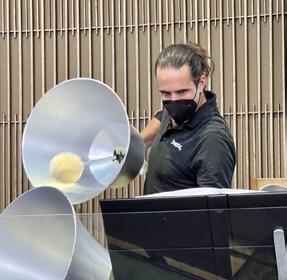
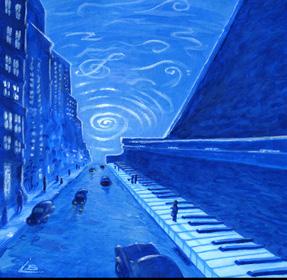

TUESDAY, FEB. 11, 7 P.M. TILL THERE WAS YOU MUSIC FACULTY RECITAL

THURSDAY, FEB. 13, 7:30 P.M. WAGING PEACE WITH DIANA OESTREICH
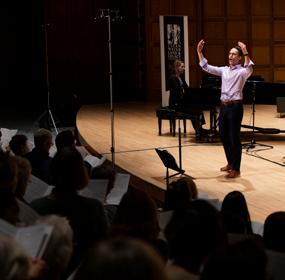
FRIDAY, FEB. 14, 3:40 P.M. IRREVOCABLE WHOLENESS: PAINTING INHERENT SACREDNESS WITH SARAH BROKKE
FRIDAY, FEB. 28, 3:40 P.M. THE JOY AND ART OF HANDBELL RINGING WITH DR. DEREK BROMME
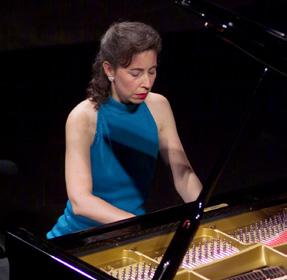

SATURDAY, MAR. 1, 3 P.M. BLUE AND THE BLUES
ST. SCHOLASTICA CONCERT BAND


THURSDAY, MAR. 6, 4 P.M. BON VOYAGE! THE CSS ITALY TOUR CHOIR
SATURDAY, MAR. 22, 1 P.M. BRING THE SING YOURCLASSICAL MPR
TUESDAY, APR. 1, 7 P.M. ANGELA HEWITT PLAYS BACH MATINEE MUSICALE
FRIDAY, APR. 4, 3:40 P.M. GLOBAL GRASSROOTS WITH DR. KEVIN TABER
FRIDAY, APR. 25, 7:30 P.M. SONGS OF THE EARTH ST. SCHOLASTICA CHOIRS


VISIT GO.CSS.EDU/SHOWS FOR A CALENDAR OF EVENTS AND TICKETS.

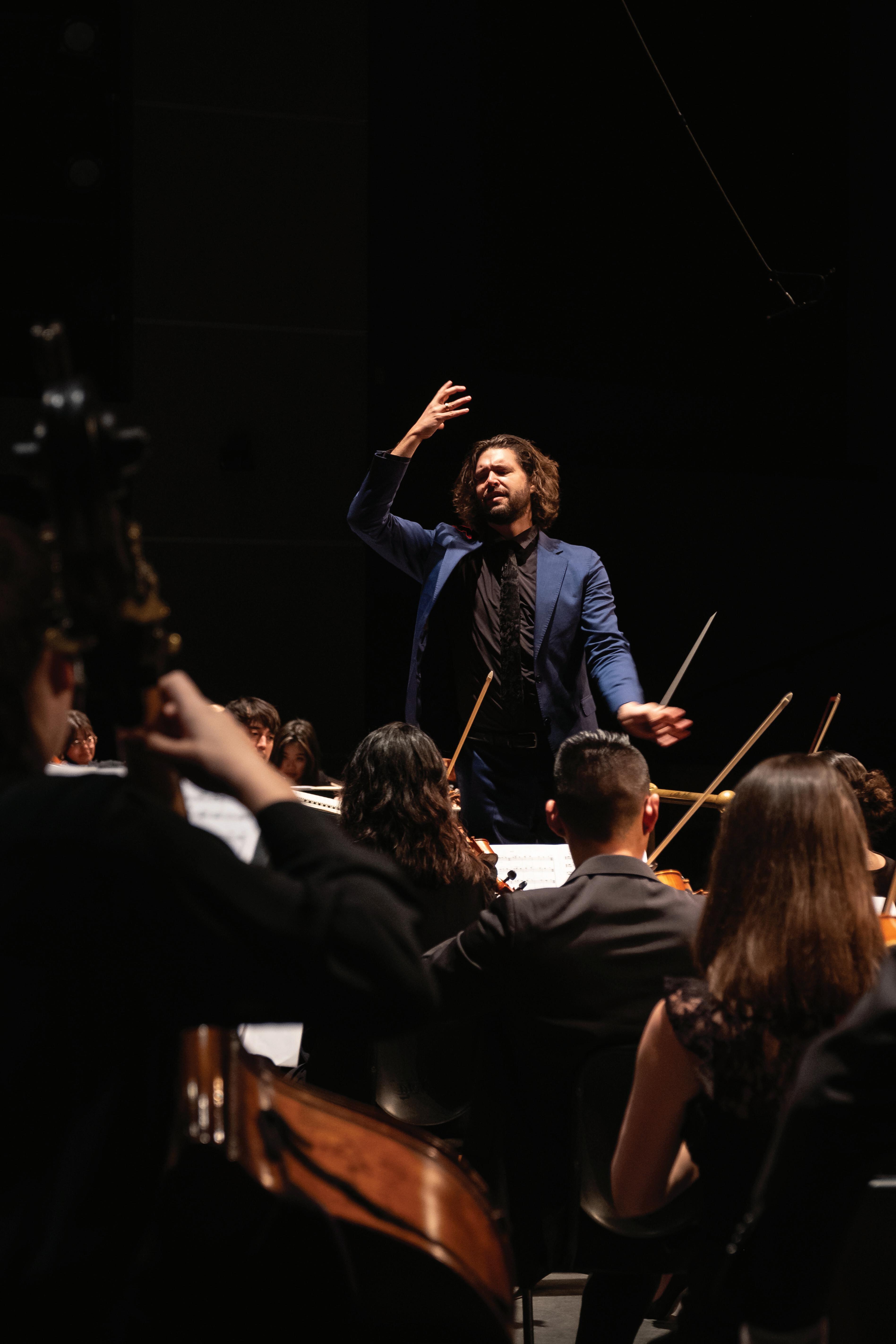
Reif
Berlioz’
Humperdinck’s

SATURDAY, APRIL 5, 2025, 7 PM
DECC SYMPHONY HALL, ALLETE STAGE
DIRK MEYER, CONDUCTOR
ERIN ALDRIDGE, VIOLIN
DSSO CHORUS
RICHARD CARRICK, CHORUS MASTER

La valse
Poème, Op. 25
Erin Aldridge, Violin
Tzigane
Erin Aldridge, Violin
Latin-American Dances for Orchestra Introduction: Jungle Jaunt The Mestizo Waltz
Nänie, Op. 82
DSSO Chorus
AGUILA
Choral Suite No. 1 from Time and Again Barelas
Ignacio’s Dream
The Rhythm of a City Ave Maria Sunrise
DSSO Chorus
Latin American Dances for Orchestra by Gabriela Lena Frank is presented under license from G. Schirmer Inc. and Associated Music Publishers, copyright owners.
Choral Suite No. 1 from Time and Again Barelas by Miguel del Aguila is presented under license from Subito Music Corporation.

Multi-genre violinist Erin Aldridge is a highly sought-after performer and teacher who has won numerous awards as both soloist and chamber musician, and has been featured throughout Europe, South America, and the United States. Aldridge maintains an active performance schedule as a soloist and chamber musician, as well as non-classical genres with her band Danny Frank & the Smoky Gold and Superior Siren. She has been a soloist with the Duluth Superior Symphony Orchestra, the Lake Superior Chamber Orchestra, the Long Prairie Chamber Orchestra, the Mesabi Symphony Orchestra, and the Itasca Symphony Orchestra. She has been a guest artist at the Indiana University Summer Music Festival, Arizona State University, DePaul University Contemporary Concert Series, Madeline Island Music Camp, Ashland Chamber Music Series, National String Workshop, “Live at the Chazen” Concert Series, and The Third Coast Chamber Collective. She has been broadcast on National Public Radio, the BBC, Minnesota Public Radio, and Wisconsin Public Radio, and featured on television in the Midwest region.
Outside of classical music, Aldridge can be seen performing a variety of genres including bluegrass, Americana, folk, funk, blues, electronic, and rock. Her principal band, bluegrass/Americana band Danny Frank & the Smoky Gold, has garnered local and regional acclaim for their virtuosic instrumentalism and genreblending original compositions. They have been featured at Blue Ox Festival in Eau Claire, Boats and Bluegrass Festival in Winona, River Falls Bluegrass Festival, The Great Northern Squashfest, GLAMA Festival, and they appear at venues around the Twin Ports and the Midwest. With Superior Siren, Aldridge made her debut at the iconic First Avenue in Minneapolis, MN opening for DeVotchKa, and played Blue Ox Festival. The first single she recorded with the Sirens, “Rattlesnake”, is garnering critical acclaim including being highlighted as a best new Minnesota song for August by Mpls. St. Paul Magazine. Aldridge is also the artistic advisor to the Duluth Superior Symphony Orchestra “Bridge Sessions”, a unique summer concert series dedicated to bringing together musicians of diverse genres to
create special performances. Aldridge has shared the stage with Pert Near Sandstone, Ryan Young (from Trampled by Turtles) Feed the Dog, Barefoot Bluegrass, Buffalo Galaxy, Saltydog, Wonderfunk, Superior Siren, Boss Momma and the Jebberhooch, Sarah Thomsen, and High & Rising. This past summer she was invited to be the “artist at large” for the inaugural Burnstone Music Festival in Sandstone, MN.
Aldridge has several recordings, including her recording of Eugene Ysaÿe’s Six Sonatas for Solo Violin, Op. 27, composer Justin Rubin’s Constellations for the MSR Classics label, and composer Ian Deterling’s Duet in F Minor, Op. 4 for Violin and Trombone. In addition, she has done recordings with acclaimed singer-songwriter Sara Thomsen as well as the Three Altos, Superior Siren, and Andy Hanson. Danny Frank & the Smoky Gold released their first liverecorded album “Live from the Heart: Danny Frank & the Smoky Gold at Sacred Heart Music Center” and they will be going into the studio in January 2025 to record their first studio album.
In the Twin Ports area, Aldridge has received recognition as a prominent artist. In the spring of 2005, she was named concertmaster of the Duluth Superior Symphony Orchestra. She was selected for the “20 under 40” award by the Duluth News Tribune in the fall of 2007, an honor given to 20 professionals who are successful in their chosen fields and role models in the community. In 2012 she received the Community Enrichment Award from the Duluth Depot Foundation Annual Artist Awards and was honored by the American Association of University Women as one of four “Created Here” artists in the DuluthSuperior area. Most recently, Aldridge received the 2023 Teaching Excellence Award (Individual) given by the Universities of Wisconsin Board of Regents.
As a conductor, she has directed many ensembles around the state and has been the guest clinician for the UW-Milwaukee High School Honors Orchestra. Under her direction, the University of Wisconsin-Superior Chamber Orchestra has developed a reputation for innovative programming specializing in performance of both traditional and new compositions. The UW-Superior Chamber Strings has been featured multiple times in concert at the Wisconsin State Music Educators State Conference, and presented concert tours in Brazil, China, and Ghana.
Aldridge attended Indiana University where she received her bachelor’s degree in Violin Performance. She received her master’s degree and Performer’s Certificate in Chamber Music Performance from the University of Wisconsin-Milwaukee and was a member of the Leonard Sorkin Institute of Chamber Music under the direction of the Fine Arts Quartet. She continued her studies at the University of Wisconsin-Madison where she received her Doctor of Musical Arts degree in Violin Performance. Her primary teachers included Mimi Zweig, Josef Gingold, Nellie Shkolnikova, Rostaslav Dubinsky, Efim Boico, and Vartan Manoogian. Her conducting instructors included Margery Deutsch and David Becker.
Aldridge is currently the Professor of Violin and Viola at the University of Wisconsin-Superior where she is also serves as Director of Orchestra. She is the Concertmaster of both the Duluth Superior Symphony Orchestra and Lyric Opera of the North Opera Orchestra.

The DSSO Chorus has a rich and storied history, dating all the way back to its establishment in 1959.
Made up of dedicated volunteers, this chorus has become an integral part of the Duluth Superior Symphony Orchestra’s performances. They regularly join forces with the orchestra to present breathtaking choral-orchestral masterworks, operas, and pops concerts.
Over the years, the DSSO Chorus has had the privilege of performing a wide range of beloved choral compositions. They have tackled monumental works such as Beethoven’s Symphony No. 9, famously known for its triumphant “Ode to Joy.” They have also taken on Mahler’s Symphony No. 2, a powerful and emotionally charged piece often referred to

In addition to these monumental works, the chorus has showcased their versatility by performing Orff’s Carmina Burana, a vibrant and rhythmic composition that captivates audiences with its energetic melodies. They have also brought to life Bizet’s Carmen, an operatic masterpiece filled with passion and drama. They’ve performed Michael Tippet’s A Child of Our Time, an oratorio in support of oppressed people everywhere. More recent performances include Brahms’ Requiem and Faure’s Requiem. And of course, no choral repertoire would be complete without Handel’s Messiah, a timeless and beloved oratorio that continues to inspire and uplift listeners.
The DSSO Chorus’s dedication and commitment to their craft have made them an essential component of the Duluth Superior Symphony Orchestra’s performances. Their contributions have enriched the cultural landscape of the community, bringing the joy and power of choral music to audiences year after year.
Richard Carrick is a conductor, clinician, singer, and educator. He is the Director of Choral Activities at The College of St. Scholastica in Duluth, MN, Director of Music at the Cathedral of Our Lady of the Rosary, and a founding member and conductor of Borealis Chamber Artists. Richard holds a D.M.A. in Choral Conducting from the University of Washington where he studied with Geoffrey Boers and Giselle Wyers. Some professional highlights include singing with the Oregon Bach Festival Chorus under Helmuth Rilling and Matthew Halls, The St. Paul Chamber Orchestra, and the Minnesota Orchestra. When not teaching or conducting, Richard can be found on a trail somewhere in the woods, or baking with his wife and children.
Chorus Master generously sponsored by members of the DSSO Chorus and an anonymous donor.
CHORUS MASTER Dr. Richard Carrick
REHEARSAL ACCOMPANIST Beth Sobczak
CHORUS ADMINISTRATOR Aine Miller
SOPRANOS
Sydney Adkins
Jenna Altonen*
Cathy Ameel
Laura Berdahl
Emilie Bowman
Terry Chialastri
Susan Dake
Nancy Dent
Maureen Gamradt
Anita Gille
Rose Heldt
Sara Henriksen
Raina Johnston
Jill Kaiser
Tasha Kapp
Michelle Kessler
Steph Love
Kelli Marlow
Rosanne Mellesmoen
Aine Miller
Alesha Murphy
Emily Nygren
Barbara Olson
Debra Schroeder
Susan Smart
Sara Stefancik
Beth Storaasli
Megan Taves
ALTOS
Andrea Asleson
Alison Aune
Mariana Beier
Audrey Beyer
Lea Carr
Kelly Crosby
Bonnie Lou Dunphy
Erin Durkee
Jill Geyer
Jane Gilley
Anneke Hoegan
Carol Hoeschen
Carrie Kelsey
Laura Kirwin
Lisa Larson
Debora Magee
Carolyn Mikel*
Lindsey Norlander
Jillian Odell
Stacy Olson
Sharon Sandvik
Ann Sanford
Linda Senta
Sandy Skrien
Tomina Starke
Anne Stephen
Kathy Stinnett
Charlotte Taylor
Shelby Trost
Gudrun Witrak
Robert Asleson
Linda Backman
Torstein Baxter-Zink*
Anne Bier
Nathan Borka
Katherine Dean
Corbin Eddy
Tegan Johnson
Glen Krenelka
James Schulzetenberg
Tom Sjoberg
Richard Carrick
Mark Danielson
Tim Delnay
Tom Diener
David Ellison
Nathaniel Fechtelkotter*
Riley Hinnenkamp
Christopher Kemnitz
Mark Knutson
Larry LeBlanc
Mike Lyons
Glenn McGill
Andrew Nast
Chris Nylander
Joe O’Connell
Dave Olson
Dennis Paulson
Luther Oson
Randy Schmidt
Kirby Wood
*Denotes Section Leader
COLLEGE OF SAINT SCHOLASTICA STUDENTS
Abby Munns
Annalise Kalm
Ava Sahr
Brandon Loosbrock
Brennan Muhich
Elia Lansing
Ella Goette
Ellie Norvitch
Emerald Melander
Emmie Hinnenkamp
Evelyn (Evy) Menden
Grace Kelsey
Henry Mattson
Isabella Smith
Izzy Roy
Jackson Hagen
Jake Bakke
James Thiel
Kirsten Papas
Logan Ogroske
Maddy Ploof
Maddy Stejskal
Madison Williams
Nathan Behrens
Peyton Ables Saylors
Sage Sorenson
Sophia Reeves
Teodora Petrovich
Vincent Lukasavitz
Zach Schaeffer
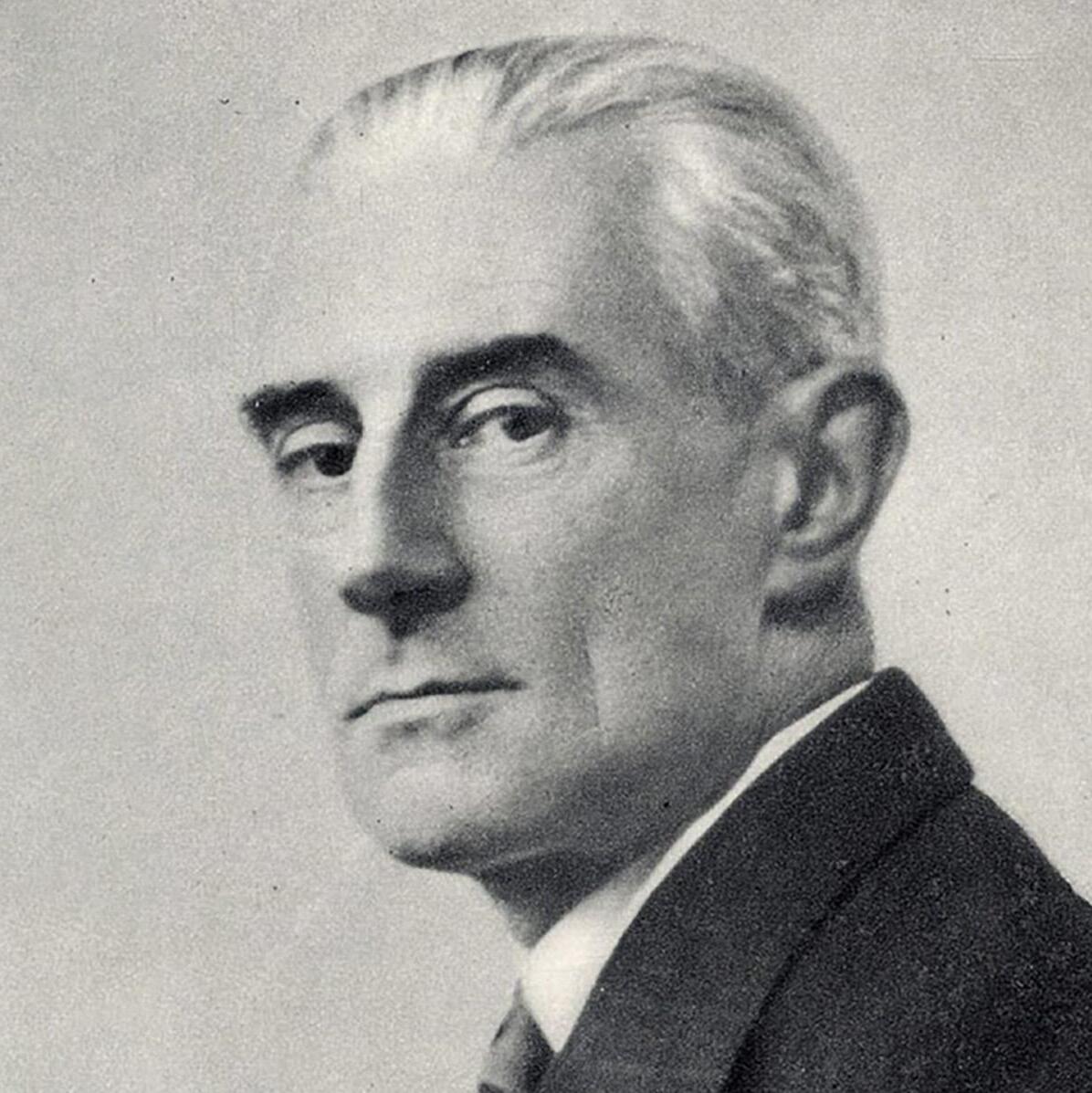
Ravel himself, however, denied that it is a reflection of postWorld War I Europe, saying, “While some discover an attempt at parody, indeed caricature, others categorically see a tragic allusion in it – the end of the Second Empire, the situation in Vienna after the war, etc... This dance may seem tragic, like any other emotion... pushed to the extreme. But one should only see in it what the music expresses: an ascending progression of sonority, to which the stage comes along to add light and movement.” In 1922 he also commented that “It doesn’t have anything to do with the present situation in Vienna, and it also doesn’t have any symbolic meaning in that regard. In the course of La Valse, I did not envision a dance of death or a struggle between life and death.” After Ravel’s death, Paul Landormy described the work in his tribute to the composer as “the most unexpected of the compositions of Ravel, revealing to us heretofore unexpected depths of Romanticism, power, vigor, and rapture in this musician whose expression is usually limited to the manifestations of an essentially classical genius.”
BORN: March 7, 1875, in Ciboure, Basses-Pyrénées, France
DIED: December 28, 1937, in Paris
WORK COMPOSED: 1919-1920
WORLD PREMIERE: December 12, 1920, in Paris; Lamoureux Orchestra of Paris, Camille Chevillard conducting
PERFORMANCE HISTORY: Tonight marks the DSSO’s ninth performance of this work. Previous performances were in 1948, 1953, 1957, 1963, 1969, 1983, 1998, and September 29, 2007.
INSTRUMENTATION: Three flutes (3rd doubles piccolo), three oboes (3rd doubles English horn), two clarinets and bass clarinet, two bassoons and contrabassoon, four horns, three trumpets, three trombones, tuba, timpani, percussion (bass drum, cymbals, snare drum, triangle, tambourine, tam-tam, glockenspiel, crotales, castanets, suspended cymbal), two harps and strings.
DURATION : 12 minutes
Ravel originally conceived of La Valse as a tribute to the Viennese waltz tradition epitomized by Johann Strauss II (1825-1899), but it evolved into a dark and profound portrait of an opulent world spiraling into chaos. Written shortly after the end of World War I, Ravel’s La Valse encapsulates the tensions of early 20th-century Europe as it grapples with the aftermath of the war and witnesses the collapse of a romanticized past.
The initial sketches for La Valse date from as early as 1906 and were tentatively titled by Ravel as Wien (Vienna), a celebration of the Viennese waltz. However, the societal upheavals that followed the First World War could very well have altered Ravel’s vision. During the war Ravel drove a truck and at times he was in mortal danger delivering munitions under heavy German bombardment. His health suffered greatly with insomnia, digestive problems, dysentery and frostbite. Also, his mother’s health was failing and when she died in January 1917, Ravel fell into “horrible despair.” Adding to that was the distress he felt at the suffering endured by the people of his country during the war. He specifically expressed these feelings in his Le tombeau de Couperin where he dedicated each movement to a friend he lost during the war. By the time Ravel completed La Valse in 1920, the world had irrevocably changed and the cheerful homage transformed into an exploration of decadence and destruction.
Ravel reworked his sketches into what became La Valse, which was commissioned by Serge Diaghilev (1872-1929) as a ballet. However, Diaghilev never produced the ballet; after he heard the two-piano reduction Diaghilev pronounced it a “masterpiece” but rejected it as “not a ballet. It’s a portrait of ballet.” This comment hurt Ravel and after La Valse became a popular concert work, the two men met in 1925 and Ravel refused to shake Diaghilev’s hand. Diaghilev challenged Ravel to a duel, but friends persuaded Diaghilev to recant and the two never met again.
Ravel described La Valse in a preface to the score: “Through whirling clouds, waltzing couples may be faintly distinguished. The clouds gradually scatter: one sees at letter A an immense hall peopled with a whirling crowd. The scene is gradually illuminated. The light of the chandeliers bursts forth at the fortissimo letter B. Set in an imperial court, about 1855.”
Regardless of Ravel’s own thoughts about its character, La Valse is a masterpiece. In our modern lens we envision it as a powerful, multifaceted work that explores themes of beauty, decay, and the inexorable march of history. Even today, more than a century after its creation, it remains as relevant and resonant as ever, a timeless reflection of the human condition.

BORN: January, 20, 1855, in Paris, France
DIED: June 10, 1899, in Limay, Yvelines, France
WORK COMPOSED: 1896
WORLD PREMIERE: December 27, 1896, in Nancy, France; Eugène Ysaÿe with the Nancy Conservatoire Orchestra, Guy Ropartz conducting
PERFORMANCE HISTORY: Soloists for the DSSO’s four previous performances were violinists John Creighton Murray (in 1949), Michael Rabin (1961), Aaron Rosand (November 13, 1976 conducted by DSSO Music Director candidate Taavo Virkhaus), and Kyoto Takezawa (November 8, 1991).
INSTRUMENTATION: Two flutes, two oboes, two clarinets, two bassoons, four horns, two trumpets, three trombones, tuba, timpani, harp, strings and solo violin.
DURATION : 16 minutes
Amédée-Ernest Chausson was born into an affluent bourgeois family. He was the sole surviving child of a building contractor who made his fortune assisting Baron Haussmann (1809-1891) in the renovation of Paris in the 1850s, which now defines modern central Paris. To appease his father, Chausson studied law and was appointed a barrister for the Court of Appeals, but he had basically no interest in that profession. He would meet celebrities such as artists Henri
Fantin-Latour (1836-1904) and Odilon Redon (1840-1916), and composer Vincent d’Indy (1851-1931) at the different salons in the city.
Chausson, at the age of 24, began attending the composition classes of Jules Massenet (1842-1912) at the Paris Conservatoire; Massenet regarded him as “an exceptional person and a true artist.” He also studied composition privately with César Franck (1822-1890). Chausson’s distinctive musical style forms a bridge between Franck’s lush Romanticism and the Impressionism of Debussy and Ravel. Chausson enjoyed visiting Bayreuth to hear Richard Wagner’s operas. His first trip in 1882 was with d’Indy to hear the premiere of Parsifal, and accompanying him on his second trip a year later was his new wife, Jeanne Escudier (1861-1936), with whom he had five children. He died in 1899 while staying at one of his country retreats, the Château de Moussets, in Limay, Yvelines. He was riding his bicycle downhill when he hit a brick wall and was killed instantly.
Chausson’s Poème is one of the most beloved works in the violin repertoire, celebrated for its lyrical beauty and emotional depth. Composed in 1896, the piece is a testament to his ability to merge the lush harmonies of French Romanticism with an intimate, introspective quality that resonates deeply with listeners. The work was inspired by a story from Ivan Turgenev’s (1818-1883) novella The Song of Triumphant Love, where the violin plays a central role in conveying intense passion and mystery. Chausson’s Poème, however, transcends the specific narrative to explore broader themes of longing, nostalgia, and transcendence.
Chausson dedicated Poème to Eugène Ysaÿe (1858-1931). In the autumn of 1896 Chausson and Ysaÿe, along with their wives, were vacationing on the Mediterranean coast of Spain. The Catalan painter Santiago Rusiñol (1861-1931) hosted a party where Ysaÿe and Chausson’s wife on piano gave an impromptu sight-reading performance of Poème; townspeople who overheard it demanded its encore three times! Also present at the party were Enrique Granados (1867-1916) and possibly Isaac Albéniz (1850-1909). Although the premiere did not make much of an impact, Poème received sustained applause when Ysaÿe performed it in Paris on April 4, 1897.
One of the hallmarks of Poème is its masterful use of color and nuance. Chausson’s orchestration is rich yet transparent, allowing the violin to soar above or blend seamlessly with the ensemble. The work’s harmonic language, influenced by Wagner and French impressionism, creates an atmosphere of subtle complexity, enhancing its emotional impact. Poème stands as Chausson’s most famous composition, embodying his unique voice in a brief but profound musical career. Its blend of lyrical intensity, tonal beauty, and structural cohesion ensures its enduring place as a masterpiece of late Romantic violin repertoire.

MAURICE RAVEL
BORN: March 7, 1875, in Ciboure, Basses-Pyrénées, France
DIED: December 28, 1937, in Paris
WORK COMPOSED: 1924
WORLD PREMIERE: April 26, 1924, in London; Jelly D’Arányi and Henri Gil-Marchex, piano; Orchestra version premiere on October 19, 1924, in Amsterdam; Samuel Dushkin as soloist with the Royal Concertgebouw Orchestra, Pierre Monteux conducting.
PERFOMANCE HISTORY: Tonight’s performance is the first by the DSSO on the Masterworks Series.
INSTRUMENTATION: Two flutes (2nd doubles piccolo), two oboes, two clarinets, two bassoons, two horns, trumpet, percussion (suspended cymbal, triangle, glockenspiel), harp, celesta, strings and solo violin.
DURATION : 10 minutes
Maurice Ravel’s Tzigane is a dazzling rhapsody that encapsulates the spirit of Gypsy music through a virtuosic display for violin. The piece serves as a testament to Ravel’s fascination with exoticism and his masterful ability to blend traditional folk elements with sophisticated classical techniques. Ravel spoke of it as “a virtuoso piece in the style of a Hungarian rhapsody” and it consists of “a string of successive variations juxtaposed without development.”
Hungarian violinist Jelly d’Arányi (1893-1966), to whom the work is dedicated, inspired Ravel with her improvisations on traditional Hungarian tunes. In 1922, Ravel attended a recital of his own music in a London apartment given by d’Arányi. After the concert was over, the violinist began playing a Gypsy melody and Ravel kept asking her for more and more. He later wrote to her, “You have inspired me to write a short piece of diabolical difficulty, conjuring up the Hungary of my dreams.” Tzigane was originally composed for violin and piano with optional luthéal (an attachment to the piano that could produce sounds like the Hungarian cimbalom - Philippe Graffin performs Tzigane as originally composed and can be found on YouTube). Ravel presented d’Arányi with the score two days before the premiere, which she performed in London on April 26, 1924. He wrote afterwards, “I don’t know what she did, but I liked it.” Months later Ravel orchestrated the piano part and the version for violin and orchestra was first performed in Amsterdam on October 19, 1924, with Samuel Dushkin as soloist. Jelly d’Arányi performed the Paris premiere on November 30, 1924, with the Concerts Colonne under the direction of Gabriel Pierné.
Although not directly channeling authentic Gypsy melodies, Ravel crafted a work that evokes the fiery passion and improvisatory freedom characteristic of Romani music. The title itself, derived from the French word for Gypsy, signals the vibrant cultural influence at the heart of the composition. Tzigane is a brilliant example of Ravel’s ability to transcend cultural boundaries and infuse his works with universal appeal.

BORN: September 1972, in Berkeley, California
WORK COMPOSED: 2003; dedicated to Aaron Lin Lockhart (b. August 24, 2003) in keen anticipation of this hombrecito’s dance
WORLD PREMIERE: April 23, 2004, in Salt Lake City; Utah Symphony Orchestra, Keith Lockhart conducting PERFOMANCE HISTORY: Tonight’s performance is the first of any music by Gabriela Lena Frank by the DSSO.
INSTRUMENTATION: Three flutes (3rd doubles piccolo), two oboes and English horn, two clarinets and bass clarinet, three bassoons, four horns, three trumpets, three trombones, timpani, percussion (bass drum, cymbals, snare drum, tambourine, tam-tam, xylophone, chimes, woodblock, temple blocks, whip, bongos, congas, thunder sheet, castanets, claves, shekere, triangles, suspended cymbals, two marimbas, rainstick), harp, piano and strings.
DURATION : 20 minutes
Gabriela Lena Frank is included in the Washington Post’s list of the 35 most significant women composers in history (August 2017). Frank’s work often draws on her multicultural background, especially her mother’s Peruvian heritage. Her father is of Lithuanian-Jewish heritage and her mother is Peruvian, of Chinese descent (they met when her father was a Peace Corps volunteer in the 1960s). In many of her compositions she elicits the sounds of Latin American instruments such as Peruvian pan flute or charango guitar, although the works are typically scored for Western classical instruments and ensembles such as the symphony orchestra or string quartet. She has said, “I think the music can be seen as a by-product of my always trying to figure out how Latina I am and how gringa I am.”
Over her relatively short career, Frank has received numerous commissions from major performing arts organizations such as the Kronos Quartet, the Brentano Quartet, Yo-Yo Ma and the Silk Road Project, Chanticleer, Carnegie Hall, the Saint Paul Chamber Orchestra, The Cleveland and The Philadelphia Orchestras, and the San Francisco and Houston Symphony Orchestras. In 2017 she founded her own school, the Gabriela Lena Frank Creative Academy of Music for emerging composers to work with renowned performers. In 2020 Frank received the 25th Annual Heinz Award in the Arts and Humanities for her work “weaving Latin American influences into classical constructs and breaking gender, disability and cultural barriers in classical music composition.” Gabriela Lena Frank is currently the Composer-in-Residence with The Philadelphia Orchestra.
We will be performing two parts from Frank’s Three Latin American Dances: Jungle Jaunt and The Mestizo Waltz. The composer provides the program notes for these movements.
Jungle Jaunt: This introductory scherzo opens in an unabashed tribute to the Symphonic Dances from West Side Story by Leonard Bernstein before turning to harmonies and rhythms derived from various pan-Amazonian dance forms. These jungle references are sped through (so as to be largely hidden) while echoing the energy of the Argentinian composer Alberto Ginastera, who was long fascinated with indigenous Latin American cultures.
The Mestizo Waltz: This final movement is a lighthearted tribute to the “mestizo,” or mixed-race, music of the South American Pacific coast. In particular, it evokes the “romancers” tradition of popular songs and dances that mix influences from indigenous Indian cultures, African slave cultures, and western brass bands.
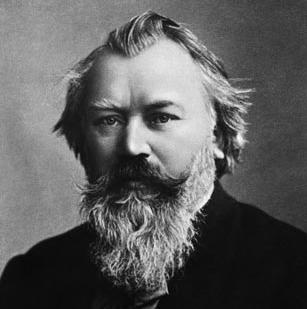
BORN: May 7, 1833, in Hamburg, Germany
DIED: April 3, 1897, in Vienna, Austria
WORK COMPOSED: 1881, in memory of his deceased friend Anselm Feuerbach
WORLD PREMIERE: December 6, 1881, in Zürich; Tonhalle Gesellschaft Chorus, Brahms conducting
PERFORMANCE HISTORY: Tonight’s performance is the first by the DSSO and DSSO Chorus.
INSTRUMENTATION: Two flutes, two oboes, two clarinets, two bassoons, two horns, three trombones, timpani, two harps, strings and mixed chorus.
DURATION : 14 minutes
One of Brahms’ most rarely performed compositions is Nänie, a poignant and contemplative work, composed in 1881 as a heartfelt tribute to the fragility of life and the inevitability of death. The piece, a setting of Friedrich Schiller’s (17591805) poem of the same name, exemplifies Brahms’ profound sensitivity to human emotions. It was composed in memory of the artist Anselm Feuerbach (1829-1880), with whom the composer had a troubled acquaintanceship (apparently the artist was too high-maintenance for Brahms to succeed in his attempts at becoming his friend). However, Brahms’ admiration for him is evident in the tender and solemn character of the work, which is not only a reflection of his personal grief, but also of the universal sorrow associated with loss.
The title Nänie comes from the Latin naenia, meaning a funeral song (named after the Roman funeral deity Nenia). Schiller’s text laments the transient nature of beauty, even when it is divine, and underscores the inexorable power of death. The first line of the poem, Auch das Schöne muß sterben! (Even beauty must die!), is an appropriate tribute to Feuerbach; Brahms respected Feuerbach’s artistic values and sensed that they had similar goals in their respective disciplines.
The inevitability of death is a constant and something which cannot be escaped. Schiller names three characters from mythology who, despite all their efforts, were unable to keep those they loved from death: Orpheus, unable to bring back Eurydice from Hades because of his inability to control his doubts; Venus, unable to save the wounded Adonis after his being attacked by a wild boar; and Thetis, who tried to make her son Achilles immortal by bathing him in the River Styx, but who left the heel by which she held him unprotected, allowing him to be killed by Paris at the gates of Troy.
Brahms composed Nänie during an era when secular choral music was flourishing among the public. Choral societies provided a major outlet for music lovers and the foundation of Brahms’ career was built with his conducting and composing choral music. It is ironic that choral music, which was a significant part of Brahms’ evolution as an artist, is now the most neglected part of his legacy. This rare gem is exceedingly beautiful and reflects the profound depth of Brahms’ emotions.

MIGUEL DEL AGUILA
BORN: September 15, 1957, in Montevideo, Uruguay
WORK COMPOSED: 2005
WORLD PREMIERE: 2005, Albuquerque, New Mexico; New Mexico Symphony Orchestra, Roger Melone conducting
PERFORMANCE HISTORY: Tonight’s performance is the first by the DSSO and DSSO Chorus.
INSTRUMENTATION: Three flutes (3rd doubles alto flute and piccolo), two oboes and English horn, two clarinets and bass clarinet, three bassoons, four horns, three trumpets, three trombones, tuba, timpani, three percussionists (bass drum, cowbell, crash cymbals, suspended cymbal, electric siren, glockenspiel, military drum w/snares, reco-reco, tamtam, triangle, wind chimes, wood block), piano, harp, strings and mixed chorus.
DURATION : 17 minutes
Three-time Grammy-nominated American composer Miguel del Aguila creates distinctive, innovative modern classical music highly influenced by his Latin American roots. A leading voice in 20th and 21st-Century music, he is a vital force in contemporary concert music, with 140 compositions that bring vibrant new diversity into the modern chamber and orchestral music repertoire. His rhythm-driven, dramatic works blend tradition and modernity with nostalgic nods to his South American heritage. Del Aguila’s third opera, Time and Again Barelas, was commissioned by the New Mexico Symphony (now New Mexico Philharmonic), the National Hispanic Cultural Center, Meet
the Composer and the City of Albuquerque in celebration of the 300th anniversary of its founding. Two choral suites have been extracted from the opera; Suite No. 1 will be performed at this concert.
The composer wrote about the opera: “Rather than writing an incidental work for the event, I was more interested in writing a dramatic work that would be of timeless and of universal interest. In summer of 2004, I finished a synopsis of the story: a love story that lasts 500 years with the neighborhood of Barelas as background.” Barelas was originally the site of an important river crossing on the main Spanish trade route through New Mexico known as El Camino Real de Tierra Adentro. This 1,590-mile road between Mexico City and San Juan Pueblo, New Mexico was used from 1598 to 1882. The village of Barelas was formally established in 1662 and was absorbed into Albuquerque in the 1880s and is the oldest neighborhood in the city (it predates Old Town, which was established in 1706).
The opera, Time and Again Barelas, begins with the murder of Don Barelas by the soldier Don Ignacio. Ignacio and Barelas’ daughter Marcelina are the central characters of the story. Following a shaman’s curse, the two are fated to fall in love through the ages. As Don Ignacio lives in shame and remorse, Marcelina gradually becomes aware that he is the murderer of her father. The opera ends in hope and affirmation as Marcelina forgives Ignacio.
Choral Suite No. 1 contains four parts:
1. Ignacio’s Dream World War Two - An ocean apart, Marcelina and Ignacio think of each other. Ignacio prepares for yet another assault on German lines. Back in Barelas, Marcelina wonders when people will abandon violence and learn to forgive, love, and live together in peace.
2. The Rhythm of a City Building a City, 1650-1850 - The town of Barelas rises. Its hard working people build the town house by house. Slowly the wide open sky of the New Mexico desert is transformed into a modest city skyline. Marcelina presides over a happy and thriving community. Ignacio enters, pursuing an escaped slave, Marigold. The people of Barelas help Marigold escape.
3. Ave Maria - Marcelina’s friend River has just told her that the man she loves is the monster who killed her father. Marcelina recoils in horror as we are transported to Los Alamos/White Sands, 1945. Terrified, Marcelina and the people of Barelas watch the eerie cloud and silent fallout that ensues, as a heavenly chorus sings an Ave Maria begging for human forgiveness.
4. Sunrise: A Place out of Time - River has been mortally wounded and Ignacio has taken her to Marcelina’s house. River is amazed at Ignacio’s transformation and as she lies dying, she tells Marcelina that Ignacio has changed and deserves forgiveness. As River’s soul leaves her body she calls on the Shaman to lift the curse. As the curse is lifted, Marcelina forgives Ignacio and as they embrace, they see a vision of the future, Barelas 2206: the people of Barelas with the sunrise over a sky as bright as their future. Learning from the past everyone has come to love, forgive and erase spite from their hearts.
Program notes by Vincent Osborn © 2024
JOHANNES BRAHMS
GERMAN
Auch das Schöne muß sterben! Das Menschen und Götter bezwinget, Nicht die eherne Brust rührt es des stygischen Zeus.
Einmal nur erweichte die Liebe den Schattenbeherrscher, Und an der Schwelle noch, streng, rief er zurück sein Geschenk. Nicht stillt Aphrodite dem schönen Knaben die Wunde, Die in den zierlichen Leib grausam der Eber geritzt.
Nicht errettet den göttlichen Held die unsterbliche Mutter, Wann er, am skäischen Tor fallend, sein Schicksal erfüllt.
Aber sie steigt aus dem Meer mit allen Töchtern des Nereus, Und die Klage hebt an um den verherrlichten Sohn.
Siehe, da weinen die Götter, es weinen die Göttinnen alle, Daß das Schöne vergeht, daß das Vollkommene stirbt.
Auch ein Klaglied zu sein im Mund der Geliebten, ist herrlich, Denn das Gemeine geht klanglos zum Orkus hinab.
MIGUEL DEL AGUILA
I. Ignacio’s Dream
Marcelina. Hear me!
Marcelina, can you hear me?
Time and again, Marcelina, you’ll ask yourself:
“Was it a dream?
Was it a pebble that eddied and died?
A pebble you threw in a stream?”
Time and again, Marcelina . . . Ah!
The voice from the past,
The echo you learned to forget.
Time and again, Marcelina,
The embers will smolder and burn.
He will remember but you will forget.
Then, as he must, he will return.
II. The Rhythm of a City
Oh, can you feel it, the rhythm, the rhythm?
Oh, can you hear the rhythm beat?
Oh, can you hear the rhythm sing?
Oh, can you hear the rhythm beat?
The rhythm of the city.
Even the beautiful must die. That which subdues mortals and gods Does not touch the unyielding heart of the Stygian Zeus.
Only once did love soften the ruler of the shades, And yet, at the threshold, sternly he recalled his gift.
Aphrodite does not soothe the wounds of the beautiful boy Whose delicate body the boar cruelly tore.
The immortal mother does not rescue the divine hero, When, at the Scaean gate, falling, he fulfills his destiny.
But she rises out of the sea with all the daughters of Nereus, And begins the lament for her glorified son.
Behold, the gods weep,
Because the beautiful perishes, the perfect dies.
Even to be a lament on the lips of a loved one is glorious, For the common ones go down to Orcus unsung.
Can you hear it coming?
Can you hear it humming?
Can you hear the rhythm?
The rhythm of a city.
When the rain becomes a river, And the mountains meet the sand, Bringing forth abundance, In a green and pleasant land.
When God creates a wilderness With paradise in mind, The hand of man since time began Is never far behind.
Can you hear it coming?
Can you hear it humming?
Can you hear the rhythm? The rhythm of a city.
When the wind across the mesas Is a sonnet to the Earth, When sunrise is a glimpse
Of Mother Nature giving birth, When the Earth is a perfection That heaven has divined, The hand of man since time began Is never far behind.
III. Ave Maria
Ave Maria, gratia plena. Ora pro nobis, peccatoribus. Nunc et in hora mortis nostrae. Maria . . .
(Hail Mary, full of grace. Pray for us sinners.
Now and at the hour of our death. Mary . . . )
IV. Sunrise
Watch the sun rise over Barelas!
See the future unfolding! A future as bright as this sun. Live forever, Barelas!
Brown, indigenous, wild, and proud!
Learn from the past, To love and forgive.
Erase all spite from your heart!
Rise and triumph!
Wake up from your dream: The spell is broken!
Wake up and rise like the sun! Let love guide your heart! Learn to forgive, to love!







ENJOY A SYMPHONY OF FLAVORS AT ANY OF THE











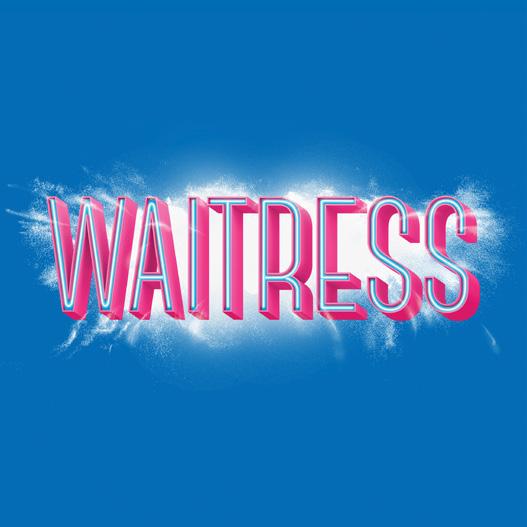




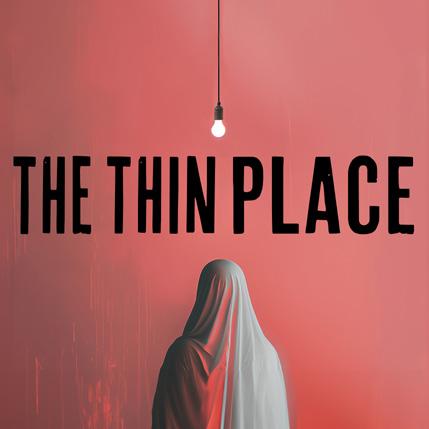



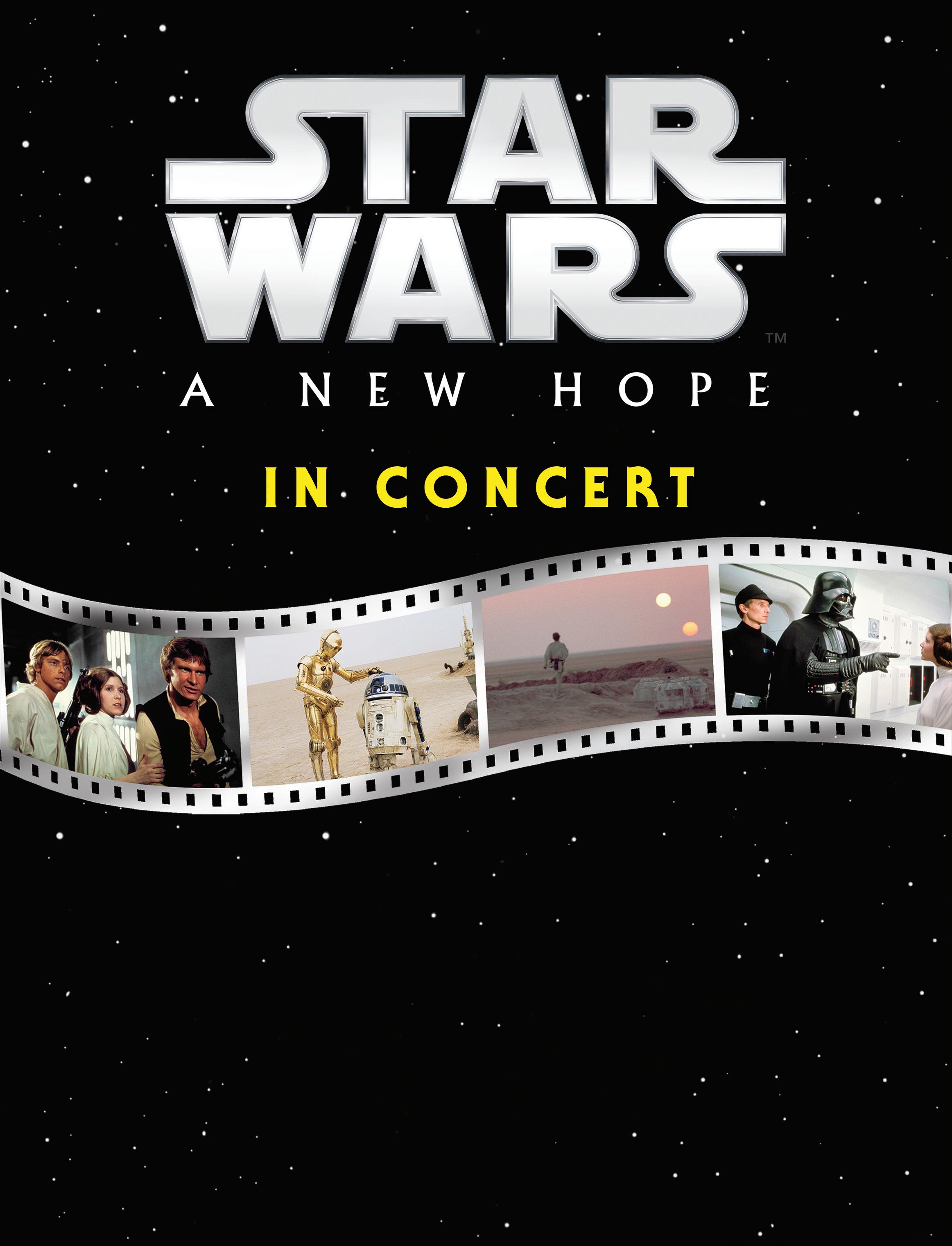
SATURDAY, MAY 10TH SUNDAY, MAY 11TH

DSSO chorus master Richard Robbins is the director of choral activities at the University of Minnesota Duluth, where directs the University Singers and Chamber Singers, in addition to teaching an array of choral conducting and music courses. Robbins travels extensively as a clinician, adjudicator, and director for choral festivals and honor choirs across the country, with recent engagements in Miami, Los Angeles, Orlando, San Francisco, Chicago, Baltimore, and New York City. He has conducted and lectured internationally on multiple occasions at Warsaw’s Chopin Conservatory of Music, the John Paul II Liturgical Institute, and at Krakow’s Academy of Music. As a conductor, his performances have been featured on numerous nationally syndicated programs, including American Public Media’s Pipedreams. His extensive experience in preparing choral-orchestral performances includes leading choirs for the Houston Ballet and for over 50 performances with the Houston Symphony. He has prepared choruses for several major conductors, including Christoph Eschenbach, Ermanno
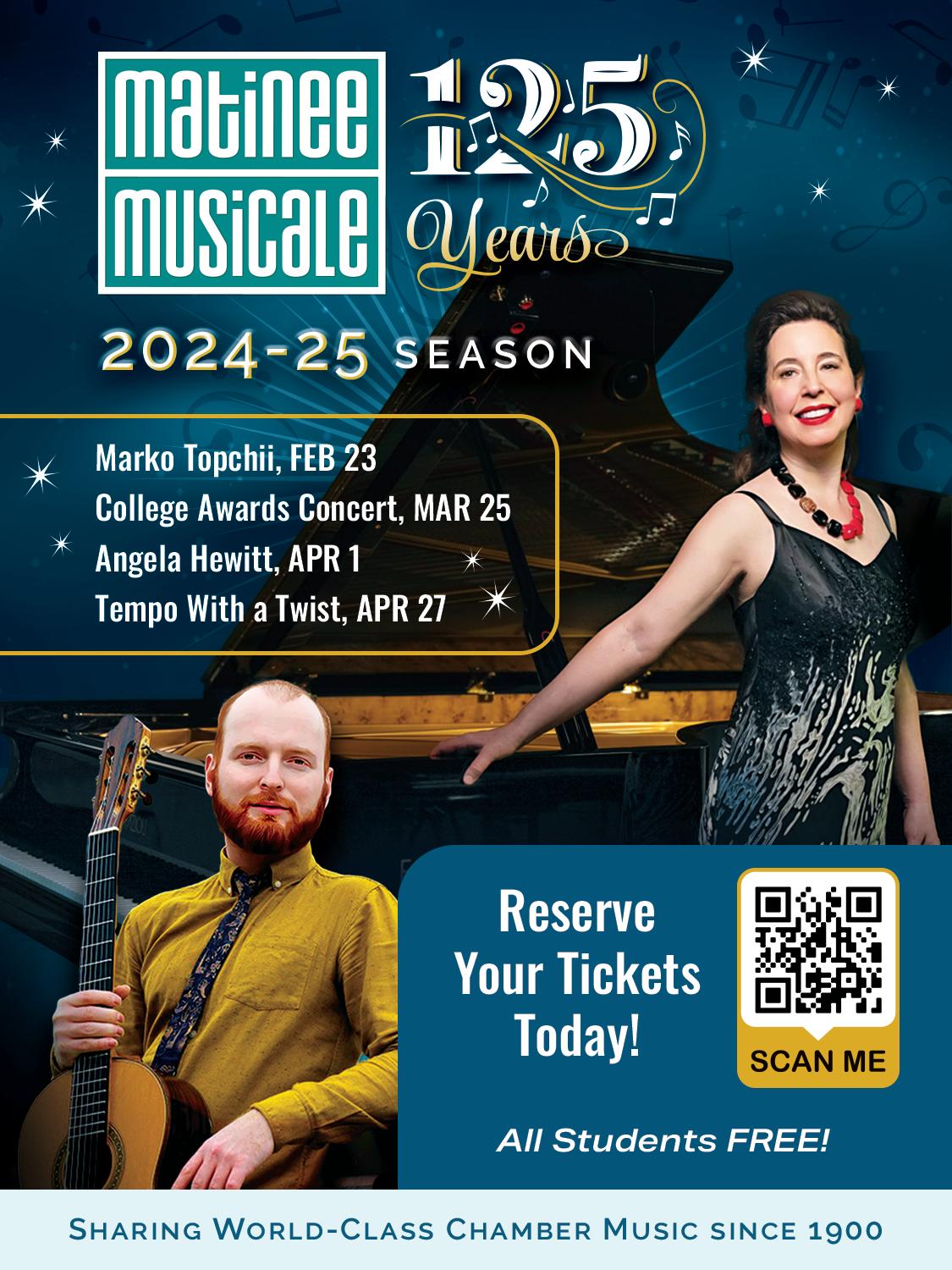


Larry Luukkonen left a significant gift to the Duluth Superior Symphony Orchestra in 2023. He was a historian, author, outdoorsman and a lover of music. The money will be used to support a concert sponsorship in perpetuity.
Larry was survived by many good friends, including Allen Anway.

Miss Cline passed away in 2024. She left a generous gift to the Duluth Superior Symphony Orchestra. Adelaide and her sister Roberta attended concerts regularly. Her money will be used to maintain the high-quality standards of the orchestra.

Fern worked with attorney Kay Biga to set up the Pachel Foundation approximately fifteen years ago. The DSSO has received many gifts since inception, including concert sponsorships. Fern also donated anonymously toward the acoustic shell project.
She was a good natured and generous person. She is pictured here on the right with Kay’s grandmother Myrtle Wicklund.
In Person - Come say hello to us at the tables in the lobby. We want to hear your stories about concerts you have enjoyed over the years.
Call the Office - We are happy to process your donation over the phone and love it when you call! 218-623-3776
Donate Online - Give securely by visiting www.DSSO.com/give
Debit Transfer - Join other DSSO patrons and simply authorize your banker to initiate a reoccurring debit transfer from your account directly to the DSSO.
Mail Us a Check - We know it can be oldfashioned, but our office loves getting mail.
506 W. Michigan St. Suite 7 Duluth, MN 55802
IRA Donation - Are you 70½ or older? You can support the music you love with a Qualified Charitable Distribution from your IRA. Please consult your tax or financial advisor for more information.
Bequest - Write your own story with planned gifts to the people & organizations you value by writing them to your Will and beneficiary designations.
Stock Donations- You can transfer appreciated stock as a gift that is fully tax-deductible.
THANK YOU TO THE FOLLOWING CORPORATE AND INDIVIDUAL CONTRIBUTORS WHO HAVE GIVEN IN SUPPORT OF THE DSSO JULY 1, 2023 THROUGH DECEMBER 31, 2024.
($25,000 & up)
Margaret Ames Memorial Fund
The Estate of Adelaide M. Cline
The Depot Foundation
Jeremy & Carol Fryberger
Arnold “Larry” Luukkonen Irrevocable Trust
McKnight Foundation
Minnesota State Arts Board
Muriel Whiteside Charitable Trust
Pachel Foundation
($10,000 to $24,999)
Anonymous
Aspirus St. Luke’s
Karl Diekman
Helena Jackson & Doug Dunham
Lloyd K. Johnson Foundation
Minnesota Power - An ALLETE Company
Wildey H. Mitchell Family Foundation
Dr. Mark & Grace Monson
North Shore Bank of Commerce
Nancy Odden & Doug Britton
William “Buzz” & Saundra Palmer
Charles A. & Carolyn M. Russell Family Foundation
Arend J. & Verna Sandbulte
Signature Wealth Management: Endersbe, Herron & Associates
($6,000 to $9,999)
Mark Danielson & Theresa Smith
Dr. Beth Gilbert
Pamella & Richard Jacobson
Jill & Tom Kaiser
Branden Robinson
Jacquie & Jim Sebastian
Amanda Wirta
($4,500 to $5,999)
Martha A. Aas
John & Kathleen Berchild
Linda & Mark Boben
Dr. & Mrs. Bernhard Boecker Foundation
Charitable Trust
Leonardo Alberto Contardo Trust
Thomas & Barbara Elliott
Darla Meier
Kathleen & James Sanders
Brad Schmugge
Nairi & William Stack
Shirley Tratechaud
($2,500 to $4,499)
Dr. Vicki & Terry Anderson
Sandra Barkley
Robert T. & Barbara Bennett
Janice Biga
Lurene S. Buhrmann
Alison Clarke
Rhonda & John Degelau
Rondi C. Erickson
Walter & Kay Gower
Christabel Grant
Thomas & Joan Hedin
Sylvia Jamar
Gale & Jeri Kerns
Elaine B. Killen
Elisabeth C. Mason Revocable Trust
Thomas & Alice McCabe
Vern & May Nordling
Northern Mechanical/Plumbing Contractors Association
Tammy Ostrander & Tony Barrett
Karen Hanson Sande, Joshua & Nathan Sande
Timothy Sandor
Lane Fryberger Smith
Tobin Sobaski & Kari Koehler
Stack Bros. Mechanical Contractors
Carolyn Sundquist
Roberta Vose
Gudrun & Geoffrey Witrak
James & Mary Zastrow
($1,200 to $2,499)
J. David Arnott & Tamara Bottge
Leonore & Robert Baeumler
Susan Bathory & Donald Lane
Kay Biga & Patrick Spott
Gary & Kathy Bubalo
Jeffrey & Vickie Cadwell
Stephen & Laurie Cushing
Rose & Lester Drewes
Duluth-Superior Area Community Foundation
Ruth Ann Eaton
Roger & Elaine Engle
Mary Evans
Debra Grimsrud
Kay & Ronald Gustafson
Irina Haller
Jeremy Hoglund
Paul & Alice Holm
Richard D. Kivela
Robert Knighton
Paul & Carol Knuti
Tina Koecher
Diane Kolquist & James Seitz
Dr. James & Mary Krook
Lakeview Arts Fund
Patricia & David Mast
Nancy Melander
LaVonne Middleton
Heather Muster
Emily Nygren
John N. Nys
Vincent Osborn & Sharon Rigby-Osborn
Dr. Susan Relf
Mary Hunner Robinson
Dr. Andrew Thompson
Rajiv & Emily Vaidyanathan
Rolf T. & Elizabeth Bent Weberg
Cathleen & Kirby Wood
Geiger & David Yount
($600 to $1,199)
Susanne & Johan Bakken
Benedictine Sisters of the St. Scholastica Monastery
Daniel & Marjorie Bergeland
Hon. David & Gloria Bouschor
Janeen Carey
John & Judith Dahl
Fr. Daniel Dahlberg
R. Craft & Eleanore Dryer
Paul Enenbach
Martha & Conrad Firling
Bruce Fuentes
Judith & Carlton Gustafson
Otto Johnson & September Mihaly
Ronald Kari
John & Sharon Kemp
Katherine & Robert Kuettel
Dennis Lamkin & Jon Niemi
James Lampi, Software Diversified Services
Dean & Kate McCall
David Mesner & Joyce Piper
Gerald & Mary Ann Ostroski
Ann Pellman
Becky Pruitt
Deborah Rausch & Dean Peterson
Gerald & Karen Ruona
Jim & Judy Stewart
Kathy Stinnett
Anita Swanson
Sharon L. Torrison
($200 to $599)
John Alexander
William Alexander
John & Cathy Ameel
Richard & Yvonne Anderson
Allen Anway
Charles R. & Judyth Babst
Linda Backman
Diane & Harris Balko
Eileen Barratt
Anne Bier
Angie Bomier
Kathleen S. Bray
Maryjane Burdge
Bill & Renee Burns
Ronald Caple
John & Martha Church
Charles Corcoran
Timothy & Kathleen Cortes
Henry F. Coyle
Bonnie Crum
Jerry & Judy Curnow
Mary & Don Davidson
Malcolm Davy & Cindy Spillers
Katherine DeVinck
Linville Doan & Bernardo Perez
Michael & Carol Donahue
Jeanne & Daniel Doty
George & Patty Salo Downs
Michele Dressel
Ruth Frederick
Patricia Gannon
Tracey Gibbens & Kerry van
Dusen
Karen & Richard Gran
Linda Haagensen
Mary K. Hagen
Elizabeth Hall
Sherry & Edwin Hall
Lynne Harrington
Dan Hartel
Ellen Hedin
Rose & Dan Heldt
Lois & Robert Heller
Ann Hockman
Karen Hoeschen
Holden Insurance Agency
Wayne Holmberg
Mary Holm-Lund
Dr. Glen E. Holt
Sally Hunner
Kenneth G. Jackson
James Jarocki
Matthew Johnson
Tegan Johnson
John & Beth Kelly
Barbara Johnson Kim
Melissa King
Mark Knutson & Beth Storaasli
Kari Koehler
Glen Krenelka
Nancy & Doug Lane
Sharon Layon & Neil Nelson
Thomas & Cynthia Ledin
Charles & Jean Leibfried
Jonathan Lewis
Michael Lillo
Gary & Nancy Loberg
Paul & Nancy Lokken
John & Michelle Magdsick
Allen Makynen
Rachel & Gregory Mason
Chris Meehan
Mark & Nancy Melhus
Julie Michels
William Miner
Alison Moeri
Darren & Suki Mozenter
Charles & Susan Nelson
Judith A. Newman
Barbara Melde Olson
Orman, Nord, Spott & Hurd
Law Office
David J. Ouse
Mary Lu Perham
Kim Quinones
Kenneth & Sandra Rausch
Mary Pat Renaud
Scott Risdal & Zandra Zweibel
Kathleen Risku
David & Jo-Ann Rossetter
Nichole & Jeffrey Schaefer
Dr. Penny Schwarze
Judi Scott
Janis & Gautam Sengupta
Janet R. Sklaris
Marilyn Steele
Sandra & Craig Sterle
Thom & Cindy Storm
Timothy & Suzanne Stratton
Charles Sundquist & James
Sontag
John Sundstrom
Richard Swenson
Mary Tennis & Stacy Lavres
Ruth & Dale Thorpe
Christine E. Underdahl
Dr. Robert Wahman
Claudia & Harry Welty
(up to $199)
William & Barbara Abalan
Fiona Adams
John J. Agacki
Cigale Ahlquist
Patricia LeDoux Ahrens
Janet Akervik
Barbara Akre
Daphne Amundson
Ann Anderson
Jesse Anderson
Jody Anderson
Tim Anderson
Sylvia Angradi
Kathleen & James Antilla
Allan L. Apter & Brenda J. Ion
Beth Arnson
Patricia & Michael Bagley
Stacey Bailey
Joe Barnstorf
Carla Bayerl
Seth & Katie Benziger
Laura Berdahl
Laurie Berg
Vernon Berglund
James & Darcy Bester
David & Karen Bjorkman
Leslie Black
Samuel Black & Kathy Stinnett
Day Breitag
Sally J. Brown
Debra Buresh
Trilby Busch
Deborah Callies & Tom Bergin
Jean & Sharon Captain
Rev. Craig S. Carlson
Lea Carr
Greta Carroll
Cathy Casper
Tom & Nancy Young Caswell
Nancy S. Caswell
Charity Gift Certificates
Eun Joo Choi
Dennis O. Cochrane
Natalie Constance
Rodger & Penny Cragun
Tim & Joanne Itami Craig
Gwyn Curran
Thomas & Kathleen Dahlberg
Dean Danielson
Debbie Davis
Diana Deming
Kathleen DeSanto
Carol Diethelm
Connie & Bill Dinan
Franklin Doane-Arkulary
Charlene Domingo, Tat Chase, & Dodi Platt
Thomas Donahue
Patricia Dorn & Harley Hanson
Gary & Marcia Doty
Peggy & Steve Downing
Mary Dragich
Anna Dufford
Bonnie Lou Dunphy
Julie Eckman
Kari Embree
Donald Erickson
Paul Eskuche
John & Louise Ann Farrell
Anya Felts
Karen Finseth
Julie A. Ford
Geoffrey Gates
John D. Gibbs
Anita Gille
Jane Gilley
Deborah Good
Paul Goossens
Kathy Guitare
Mary & Joe Gummerson
Ann Gumpper
Diane Hagerty
Greg Hansen
Charles Hanson
Isaac Hanson
Ann W. Harrington
Clay Helberg
David & Mary Helf
Sara Henriksen
Laura Herrero
Linda Herron
Eve Hessler
Jill & Greg Hilliard
Barbara Hjort
Jill-Ann Hoag
Mary & Allen Hoberg
Lisa Hoch
Kevin & Carol Hoeschen
Sr. Kathleen Hofer
Joel Hoffman
Bobby & Sally Horstman
Gy Houle
Robert D. Howe
Bryan Howell
John Hsieh
Mary Jane Jacobus
Debra Jensen
Christine Winkler Johnson
Cody Johnson
Dennis & Susan Johnson
Marian & Donald Johnson
Murray & Diana Johnson
Rachel Johnson
Robert & Barbara Johnson
Marlene D. Johnston
Peter K. Jongewaard
Linda Jorgenson & Jack
Gunderson
Callia Karr
Jason Kearney
Meg Kearns
Karen & John Keenan
Georgia L. Keeney
Robert Kelley
Lynne King
Patricia & Mark Kolquist
Virginia Kovaleski
Diane Kruger
Pat Kruschke
Karl Kubiak
Nicholas Kyriazi
David & Barbara LaMaster
Sally & Nick Lansing
Sarah Lawrence & Calland Metts
Ruth Leathers
Paul & Marsha Lee
Joshua Lehigh
George & Lynn Lehman
Jonathan Leshnoff
Jennifer Lien & Cheong Soon Gan
Jan Lippitt
Bonnie & Bob Lloyd
Eric Long
Charlie Lydon
Scott Lykins
Michael Lyons
Judy MacGibbon
Debora Magee
Lisa & Gary Mandelin
Sharon & Toby Marcovich
Clinton Mattson
Thomas McCann
Cathy McCarty & Don Wallerstein
James & Cindy McLeod
Karen McManus
Messerli Kramer Law Firm
Patricia Mester
Carol & Vincent Michealson
Donald Mitchem
Pam Moore & Dr. Jon Stephenson
Tom & Julie Morgan
Penelope & Ron Morton
Bruce Munson
Janet & John Murphy
Kathryn Noble
Ann M. Novack
Richard & Ruth Nystrom
K.R. Olivera
Carolynn & David Olsen
Margaret Oman
Timothy Panula
Parker Artists Managers & Consultants
Al & Lynda Parrella
Dennis Paulson
Judith Pearson
Bryan Pena
P.E.O. International Sisterhood
Gregory Pesola
Louann Petersen-Noltner
Mary Kay Plank
Charles J. & Della Pleski
Luther & Angela Qson
Nancy & Roger Ralston
Mayur Rao
Brian & Suzanne Rauvola
Lance G. Reasor
Cory Renbarger
Rachel Ridenour
Lela Rikkola
Leonard Rouse
Lonnah Royale
Brian Ruggle
Deirdre Ryan
Nathan Sager
Archibald Salyards
Diane Sauer
Sharon Scheidel
Carrie Scherer
Britta Schielke
Barbara Schlichting
Randy & Heather Schmidt
Theodore A. Schoen & Laurie
Van Brunt
Harley Schreck
Denise Schreifels
Dr. John Schrock & Mary Berube
Diane Scott
Ronald Scott
Edwyna Scouton
Buddy Scroggins
Judy Seliga-Punyko
David Setnicker
Melanie Sever
Laurie & Mark Severson
Dr. Thomas & Janice Shuey
Sheila & Fred Shusterich
Mark & Sandra Signorelli
Julia Sisler
Steven & Jane Skalisky
Jake Skoglund
Paige Slemmons
Edward Smith
Judy Smith
Phyllis & Vic Smith
Tina Solots
Gerald Soyring
Lawrence Spears
Roxanne Stahl
Connie Olson Stanley
Harlan & Anita Stech
Paul Stein
Ann-Marie Stojevich
Clifford & Lucia Storr
This list represents gifts being made in tribute to an individual, organization or occasion.
LAURIE BASTIAN
Thom & Cindy Storm
LINDA BOBEN
Mark Boben
ANGIE BOMIER
Paul Holm
KATHLEEN DALY
Deborah Good
THOMAS DONAHUE
Charles & Jean Leibfried
KEVIN HOESCHEN
Karen Hoeschen
MARY HUNNER ROBINSON
Sally Hunner
ANDRE & MARILYN LAMOUREA
Janis & Gautam Sengupta
Rebecca Strand
Emily & Luther Strayer
Lee Stuart
Sue Swendsen
Paul Takkunen
Linnea Swenson Tellekson
Adrienne Thureen
Tom Tjepkema
Steve & Kerry Tomhave
Lucas Trea
Ruth Ann & William Trembath
UMD College of Pharmacy
Paul & Marlene van
Puymbrouck
Shelly J. Vanneste
Michelle Vesel
Marina Vork
Jennifer & Steve Wabrowetz
John Wakefield
Jori & Chuck Walt
Sarah Warner
Rachel Warner
John Weaver
Kim Westerham
Peggy White
Trevor L. White
Cyrus White
Hope White
Judy Whitely
Laura Whitney
Heidi Wick
Jason Young
Lyle & Michelle Zappa
Mary Wagner Zbaracki
VINCENT OSBORN
Ruth & Dale Thorpe
BRANDEN ROBINSON
Sally Hunner
MELANIE SEVER
Malcolm Davy & Cindy Spillers
Our hearts go out to the families and friends of musicians or patrons who have passed. *This list represents those we have been made aware of through Memorial Gifts.
BILL ALEXANDER
Branden Robinson
DOROTHY ANWAY
Allen Anway
VICTORIA BENDA LUEPKE
Harlan & Anita Stech
DR. & MRS. BERNHARD BOECKER
Dr. & Mrs. Bernhard Boecker Foundation Charitable Trust
JANET MILLEA BYE
R. Craft & Eleanore Dryer
Lisa Hoch
Paul Lantieri
Mary K. Murphy & Murphy Family
Jennifer Naegele
Sheila Runquist
Roberta Vose
MARY DONAHUE
Thomas Donahue
Charles & Jean Leibfried
MARY BETH DUNDER BROWN
Janice Biga
Kay Biga & Patrick Spott
AUDREY FISHER
Jean & Sharon Captain
JAMES GRANT
Fiona Adams
John & Kathleen Berchild
Kay Biga & Patrick Spott
Steve & Lauri Cushing
Mark Danielson & Theresa Smith
Mary & Don Davidson
Connie & Bill Dinan
Gary & Marcia Doty
Mary Evans
Walter & Kay Gower
Greg & Rebecca Hansen
Thomas & Joan Hedin
Helena Jackson
Peter Jongewaard
George & Lynn Lehman
Tom & Julie Morgan
Penelope & Ron Morton
Rao Mayur
Deborah Rausch & Dean Peterson
Scott Risdal & Zandra Zweibel
Laurie & Mark Severson
Ann-Marie Stojevich
Emily & Luther Strayer
Roberta Vose
ALICE HOLM
Paul Holm
ROBERT G. HOWELL
Bryan Howell
JOHN HUSSEY
Tracey Gibbens & Kerry van Dusen
JACK JARNIS
Mark Danielson & Theresa Smith
PATRICIA DIANE JOHNSON
Stacey Bailey
Tom Bergin & Deborah Callies
James & Darcy Bester
Debbie Davis
Charlene Domingo, Tat Chase, & Dodi Platt
Patricia Dorn & Harley Hanson
Kari Embree
Charles Hanson
Robert & Barbara Johnson
Marlene Johnston
Mesabi Symphony Orchestra
Edwyna Scouton
Roxanne Stahl
Paul & Marlene Van Puymbrouck
Sarah Warner
Peggy White
Judy Whitely
Heidi Wick
Amanda Wirta
KALERVO & ARLYNE KOKKONEN
Judith & Carlton Gustafson
DAVID KORTIER
Dr. Penny Schwarze
MARGE KUEHN
Kathleen & James Antilla
DEXTER LARSEN
Kay Biga & Patrick Spott
James & Mary Zastrow
DARYL & ANNE LEIBFRIED
Thomas Donahue
THOMAS MCCABE
Julie Eckman
JOSEPH MEESE
Julie Demgen
William “Buzz” & Saundra Palmer
James & Jacquie Sebastian
Linda & Mark Boben
Anne & William Fleischman
Patricia Anderson
Serena Lamers McClellan & Robert McClellan
Robert Meese Jr. & Ann Small
GARY MEIER
Darla Meier
WALTER & ALTA MOE
Shirley Tratechaud
DON NIEMI
Sharon L. Torrison
KERSTIN PAPCKE (née MEYER)
Diane & Harris Balko
James & Mary Zastrow
DR. JAY PARKER
Kay Biga & Patrick Spott
ANNETTE RADTKE
Gwyn Curran
DR. CLARENCE MALCOLM SCOTT
Janice Biga
Kay Biga & Patrick Spott
Sally J. Brown
Dennis O. Cochrane
Katherine DeVinck
Walter & Kay Gower
Barbara Hjort
Sylvia Jamar
Murray & Diana Johnson
Diane Kruger
Jan Lippitt
Sharon & Toby Marcovich
Janet & John Murphy
Richard & Ruth Nystrom
Ronald Scott
Marilyn Steele
JAMES E. SMITH
Ronald Kari
MARA SOLIE
William “Buzz” & Saundra Palmer
LORRAINE STOLEE
Dr. Glen E. Holt
James & Jacquie Sebastian
William “Buzz” & Saundra Palmer
Paula Fenstad
Dale & Joretta Nikula
Jeanette Nelson
North Shore Bank of Commerce
Roberta Vose
SAMUEL TRATECHAUD
Shirley Tratechaud
DAVID VOSE
Sharon L. Torrison
Roberta Vose
SHARON WAHMAN
Roberta Vose
Lane Fryberger Smith
ALBERTE WHITE
Trevor L. White
JANET R. YOUNG
William & Barbara Abalan
Tom & Nancy Young Caswell
Bonnie Crum
John & Louise Ann Farrell
Walter & Kay Gower
Diane Hagerty
Patricia & Mark Kolquist
K.R. Olivera
Kim Westerham
Lyle & Michelle Zappa













WE ARE PLEASED TO OFFER A BIG THANK YOU TO OUR SPONSORS FOR THE 2024-2025 SEASON. THEIR GENEROUS SUPPORT MAKES IT POSSIBLE FOR THE DSSO TO BRING WORLD-CLASS CONCERTS, EDUCATIONAL PROGRAMS, AND COMMUNITY OUTREACH TO THE NORTHLAND. BRAVO!













This activity is made possible by the voters of Minnesota through a Minnesota State Arts Board Operating Support grant, thanks to a legislative appropriation from the arts and cultural heritage fund.












T h e P i l l a r s S e n i o r L i v i n g
L i f e a s i t s h o u l d b e

c












